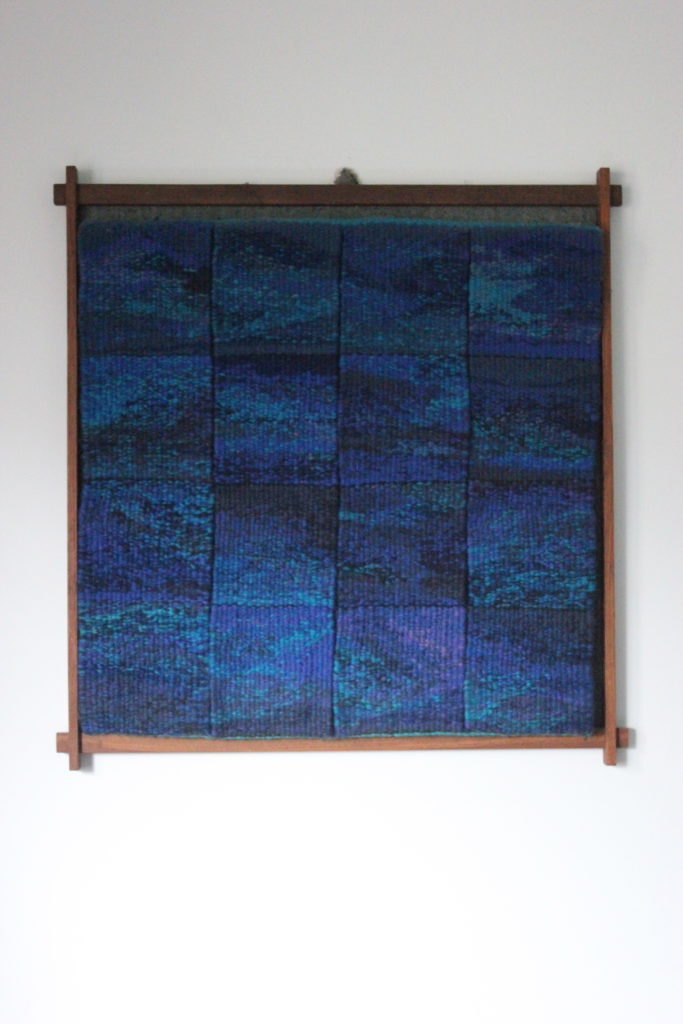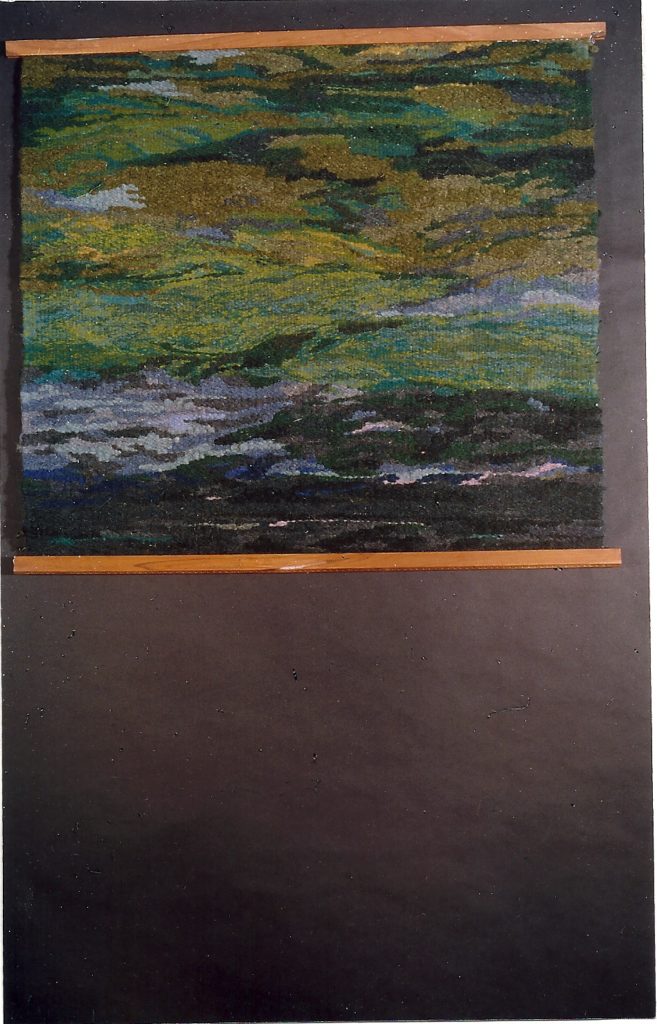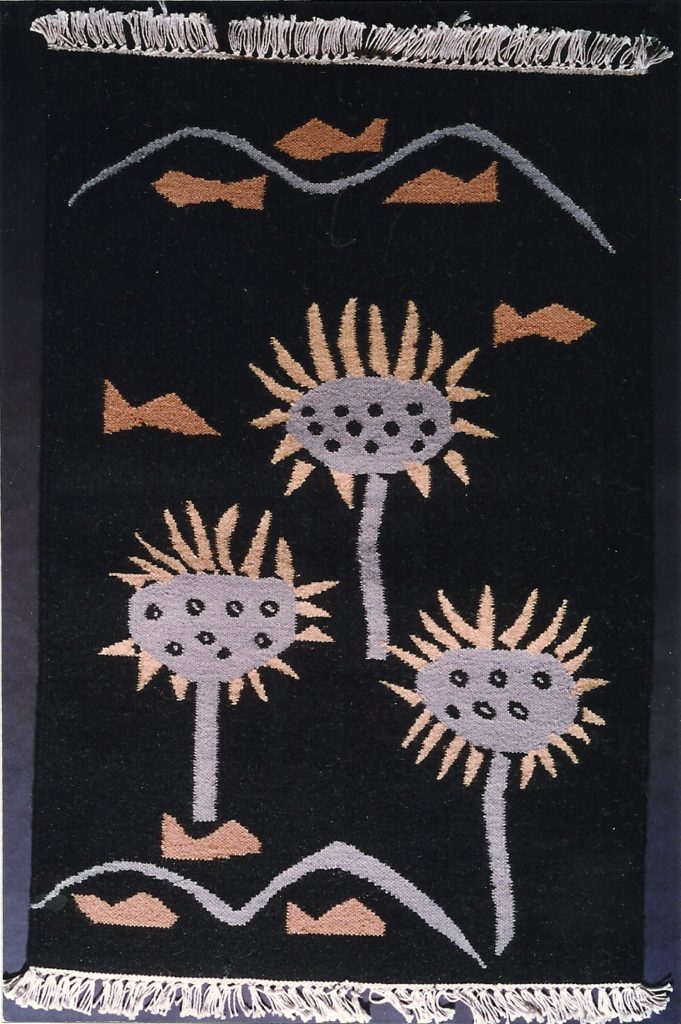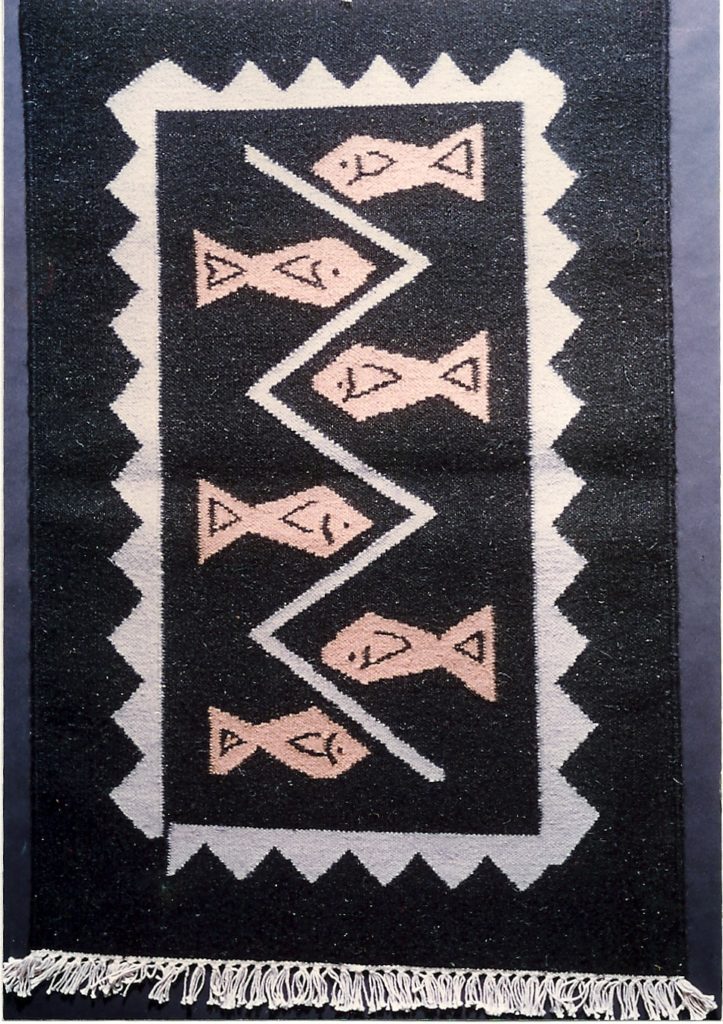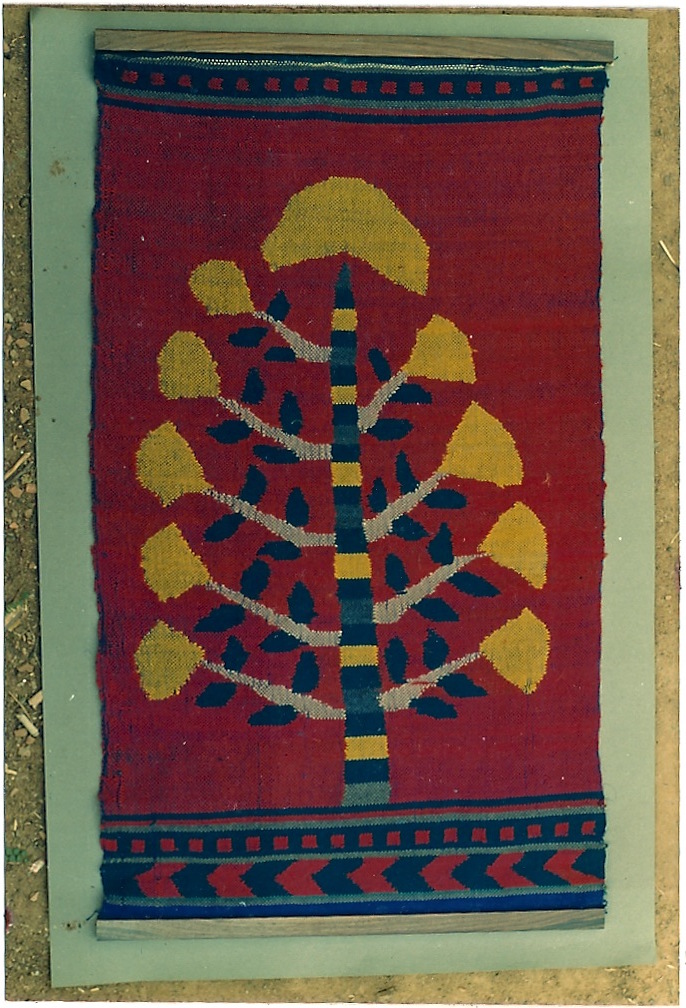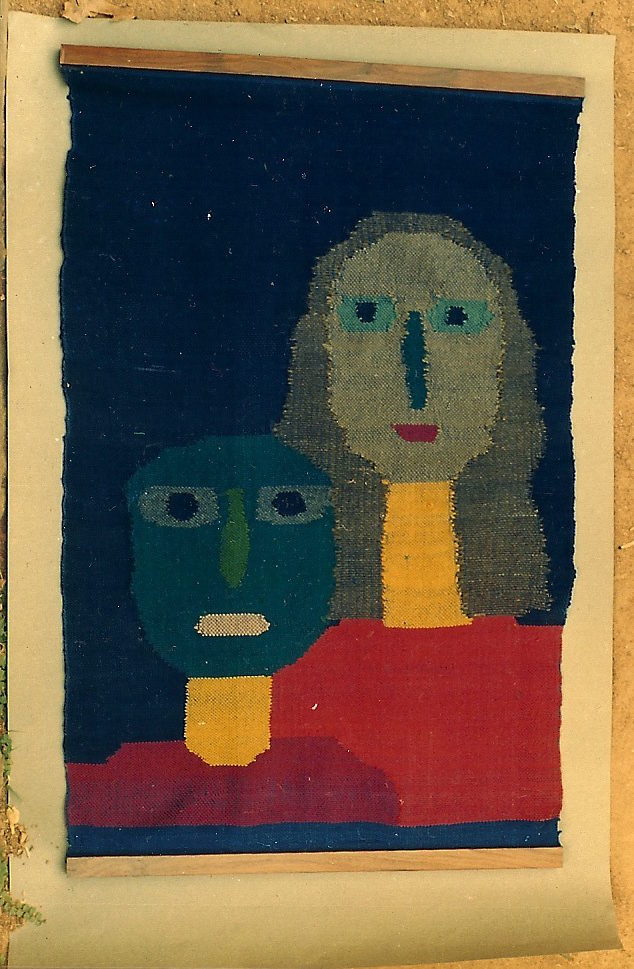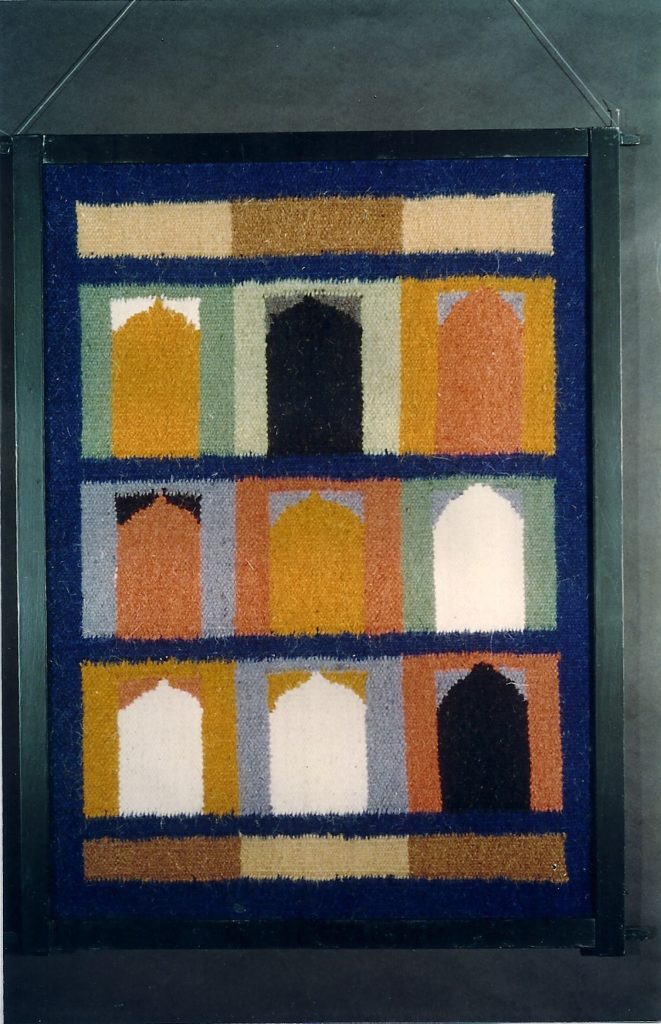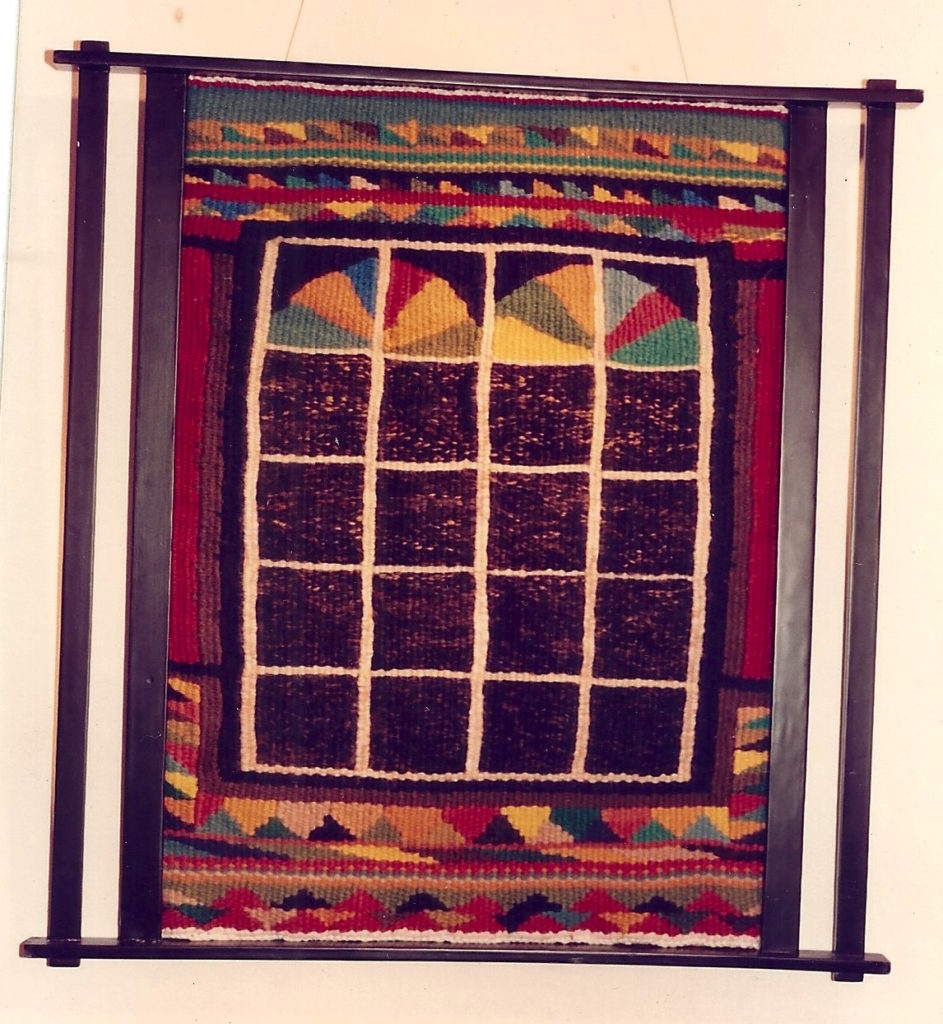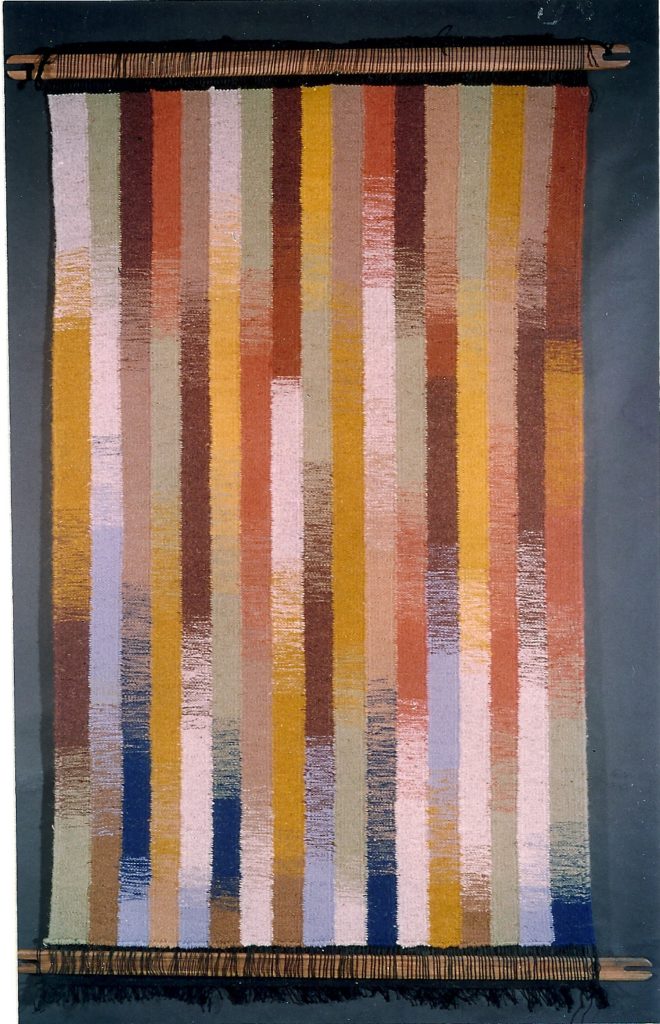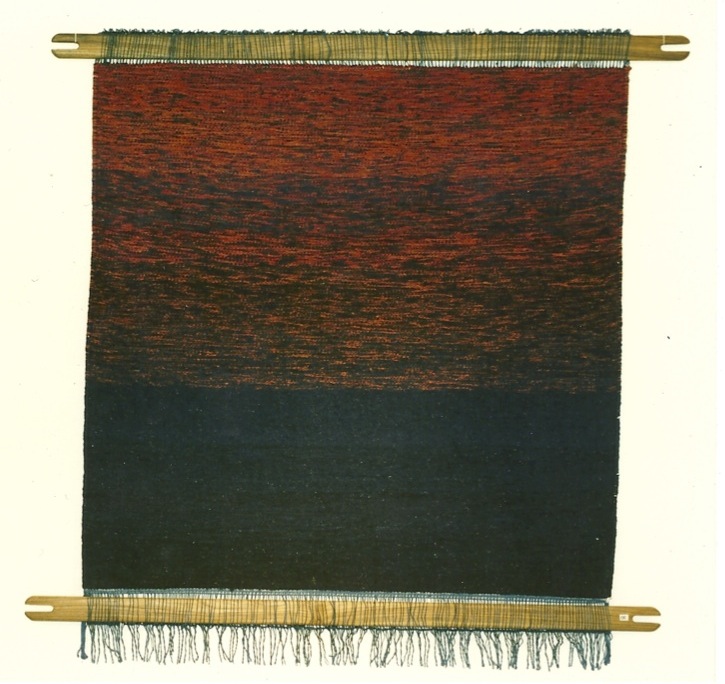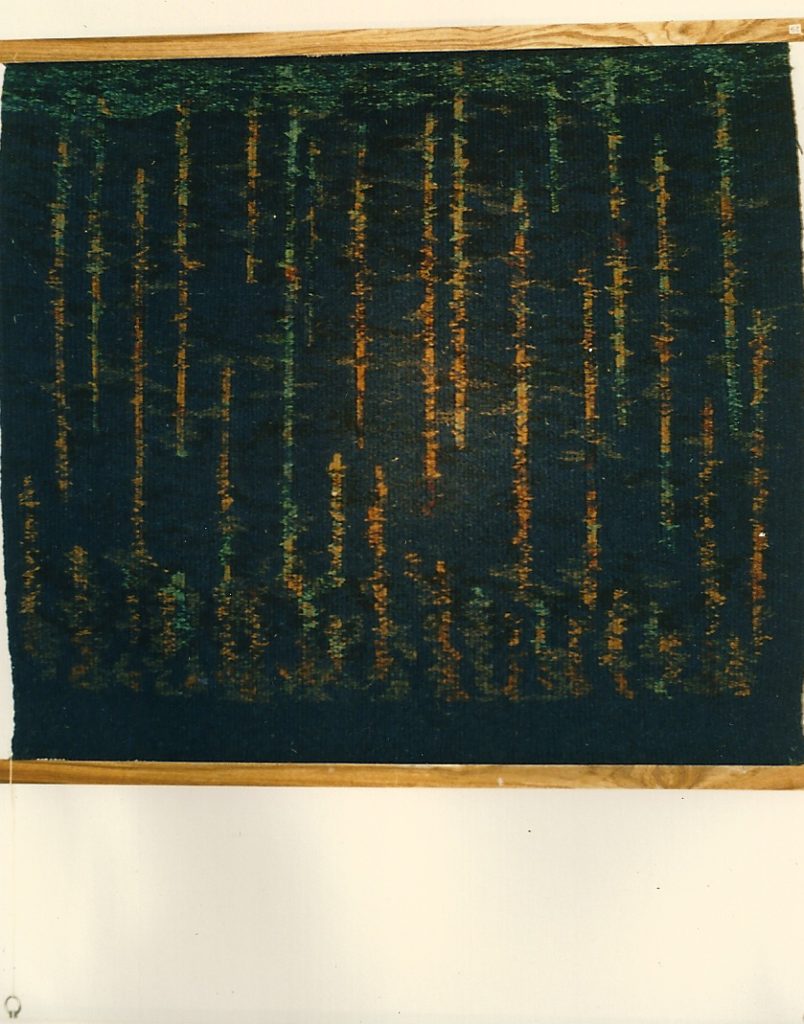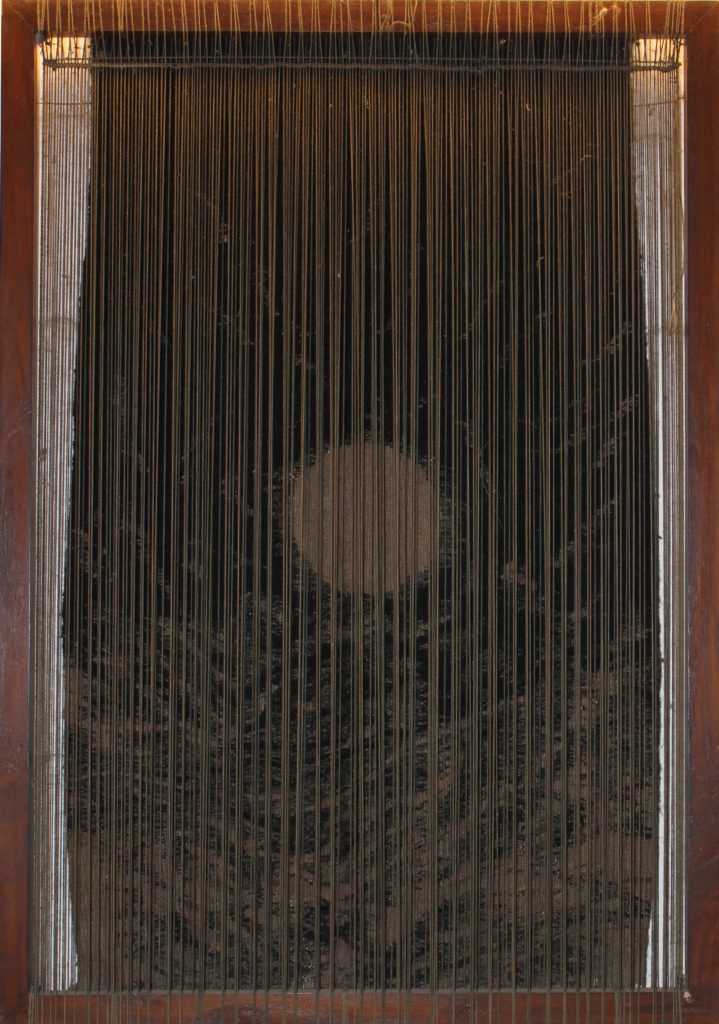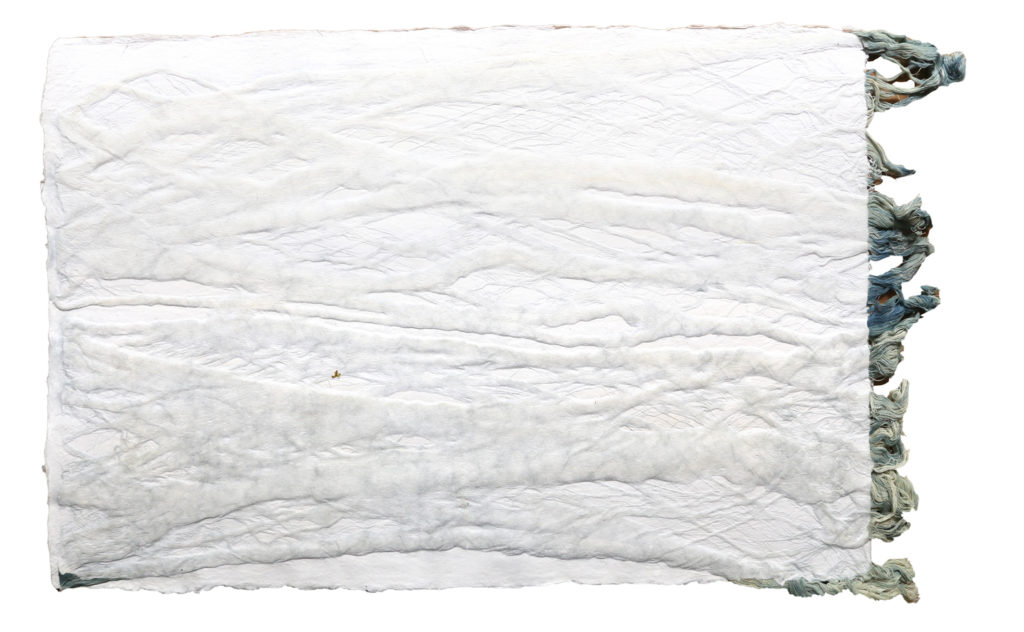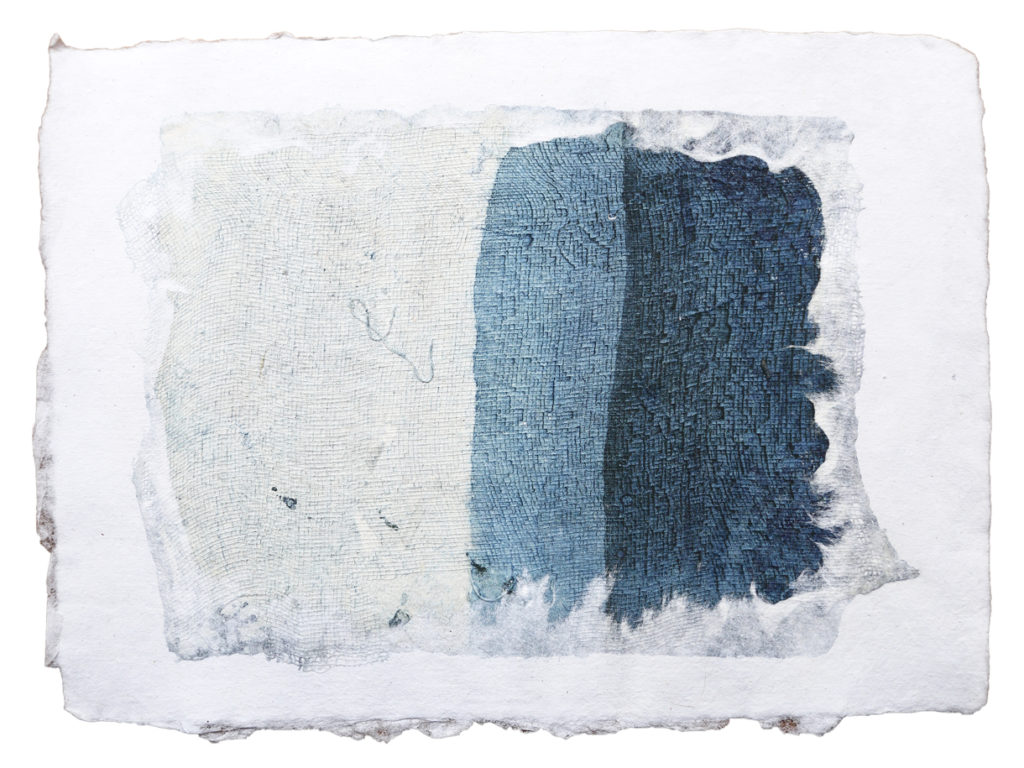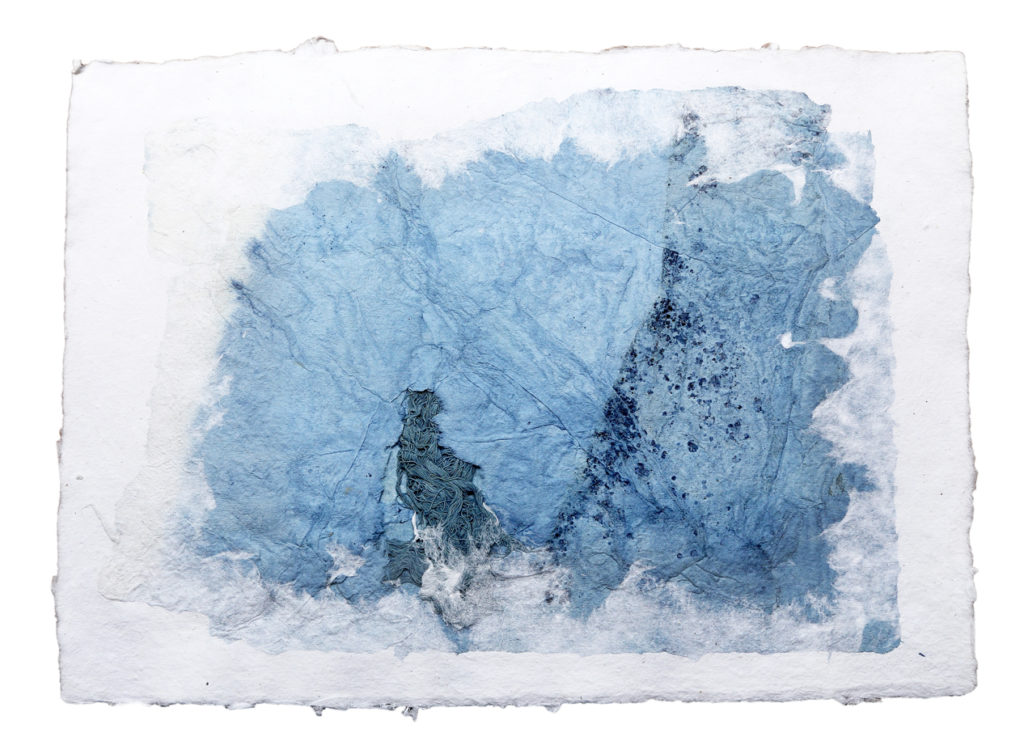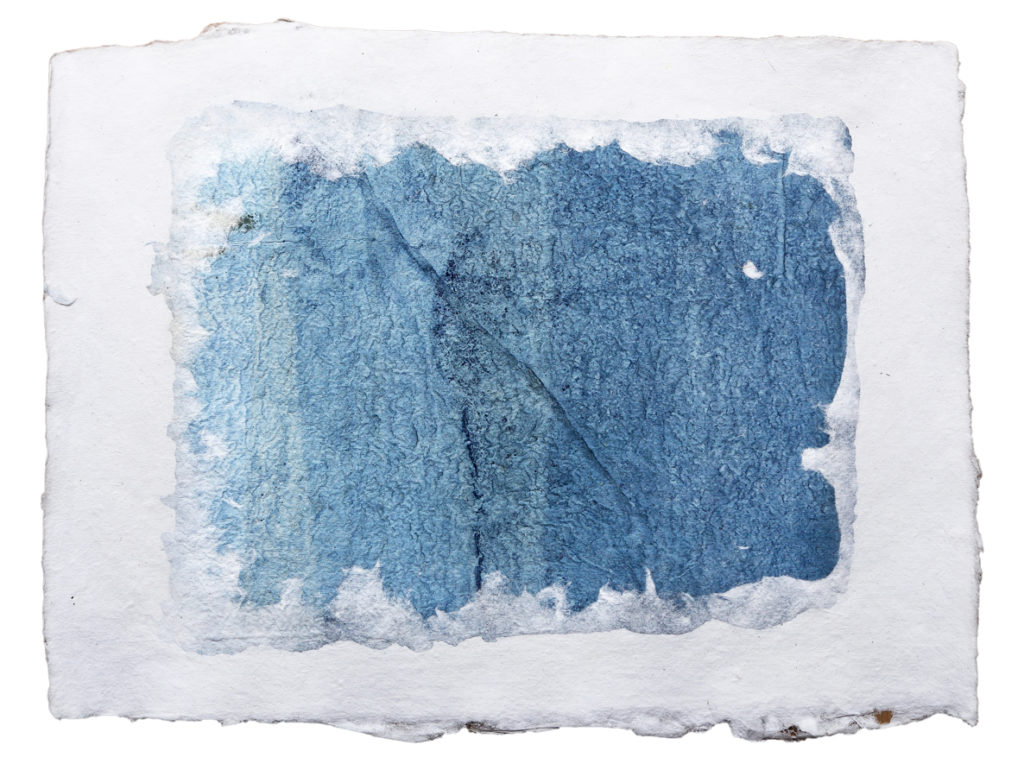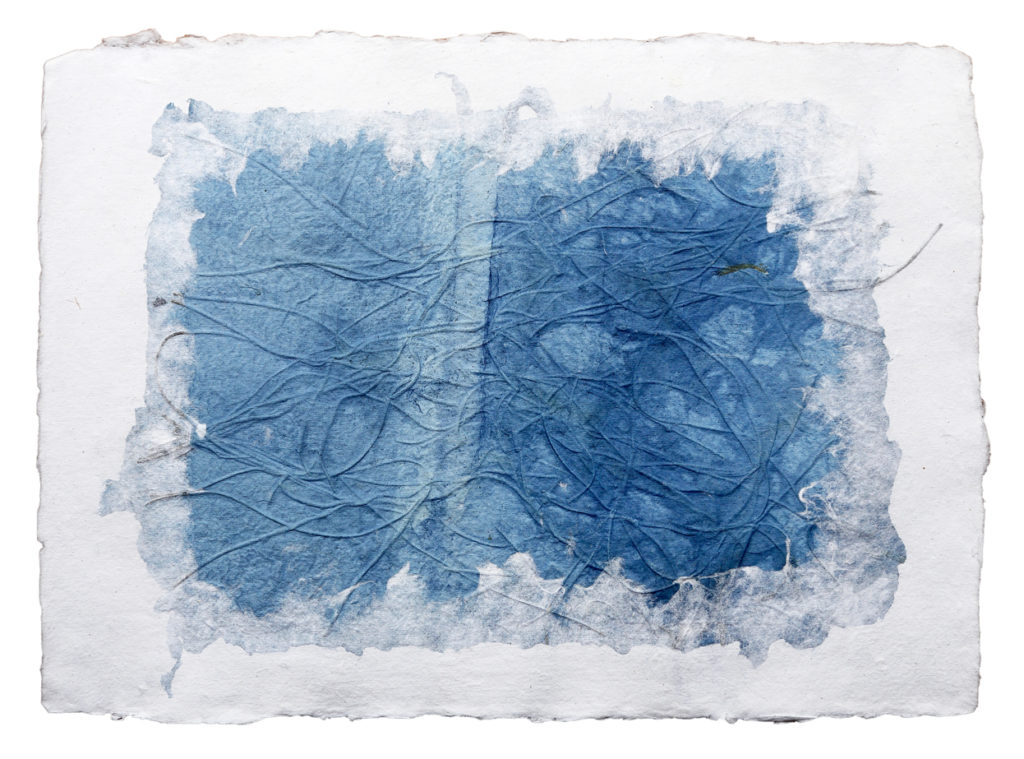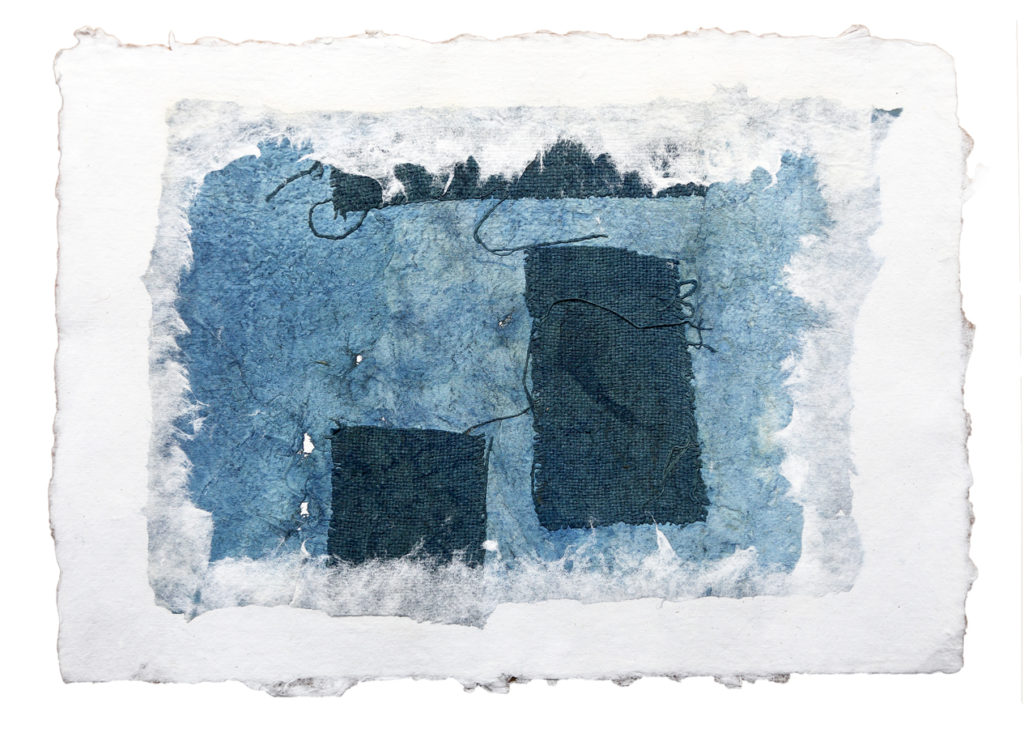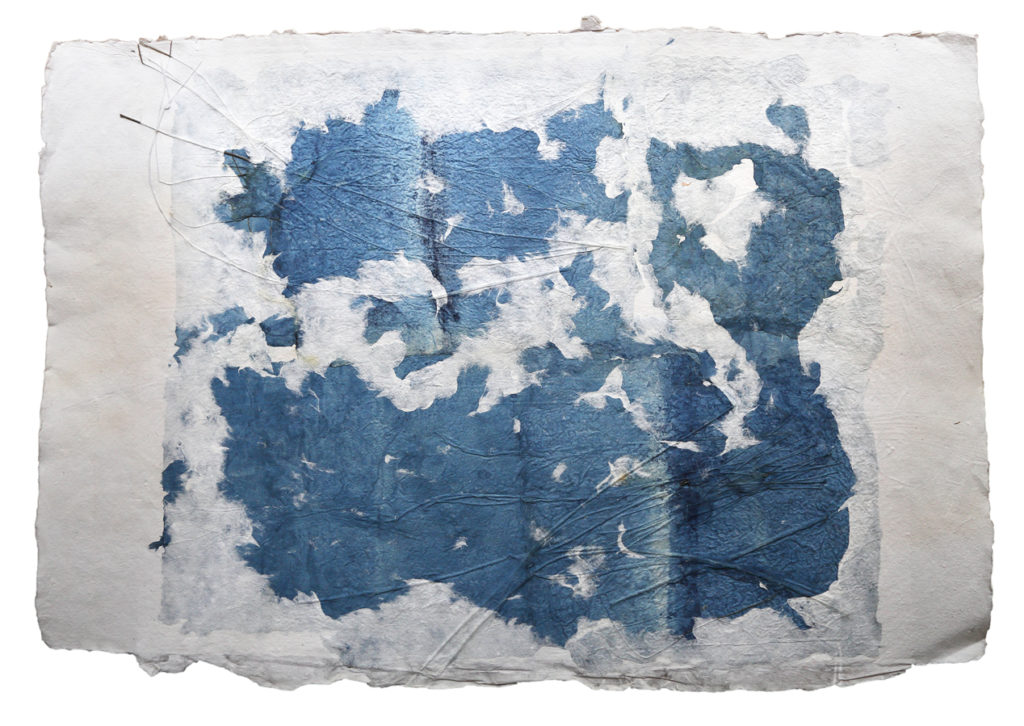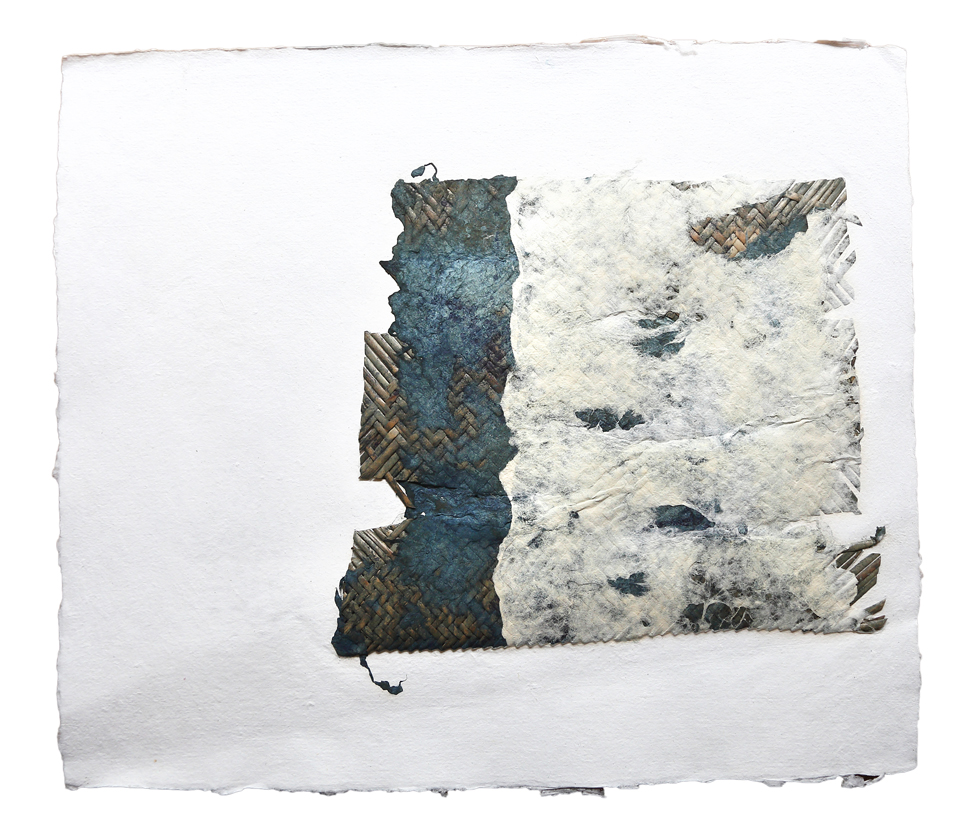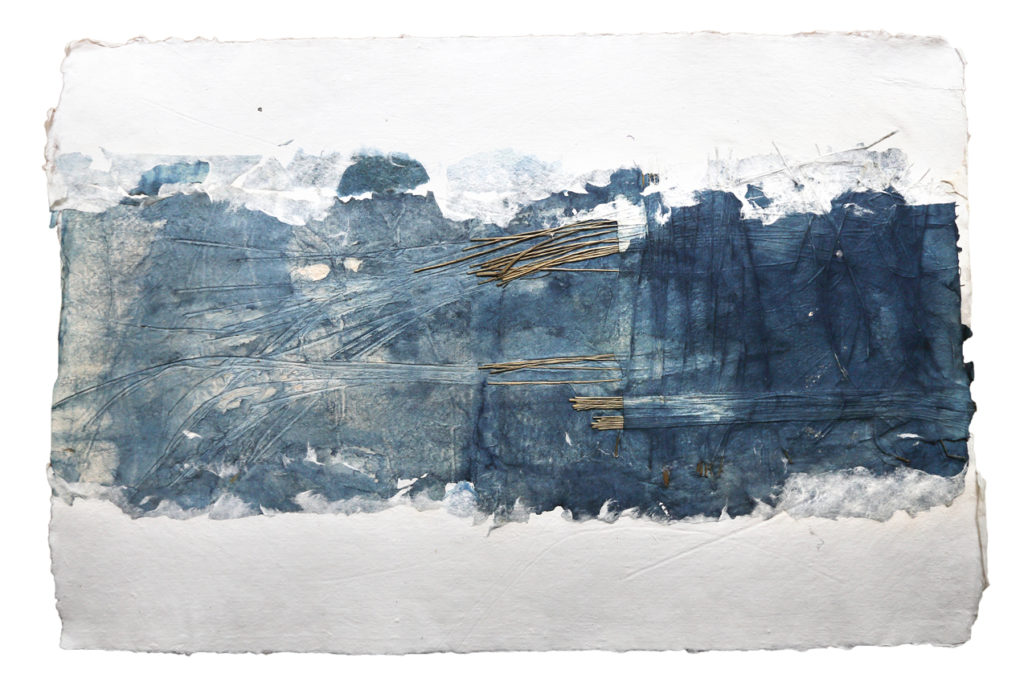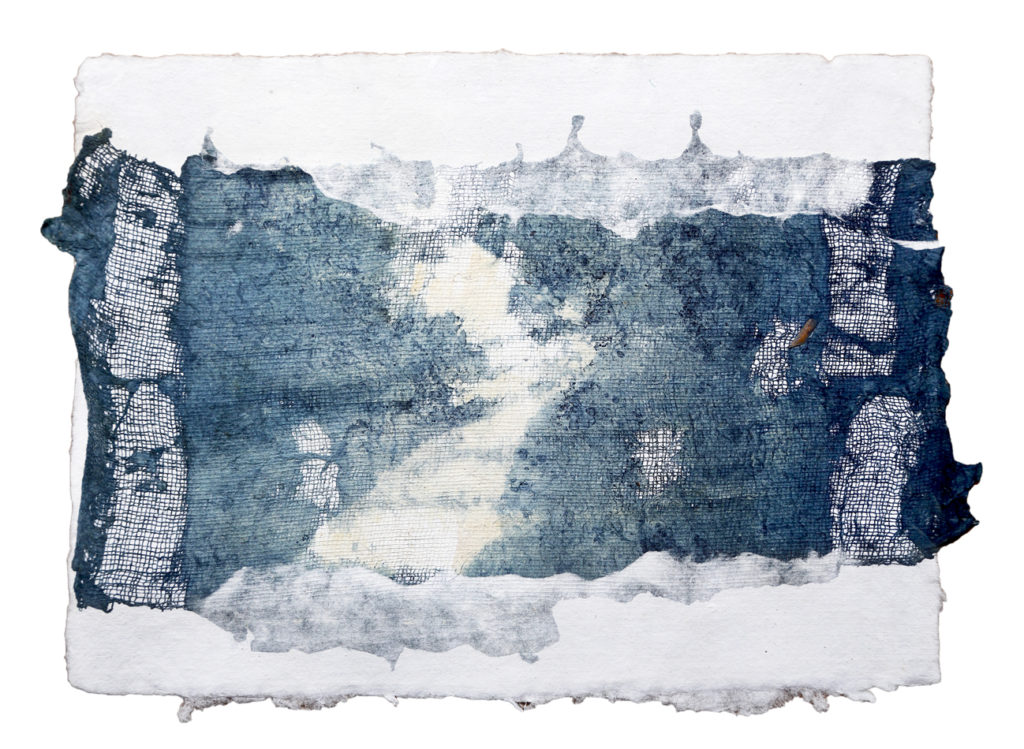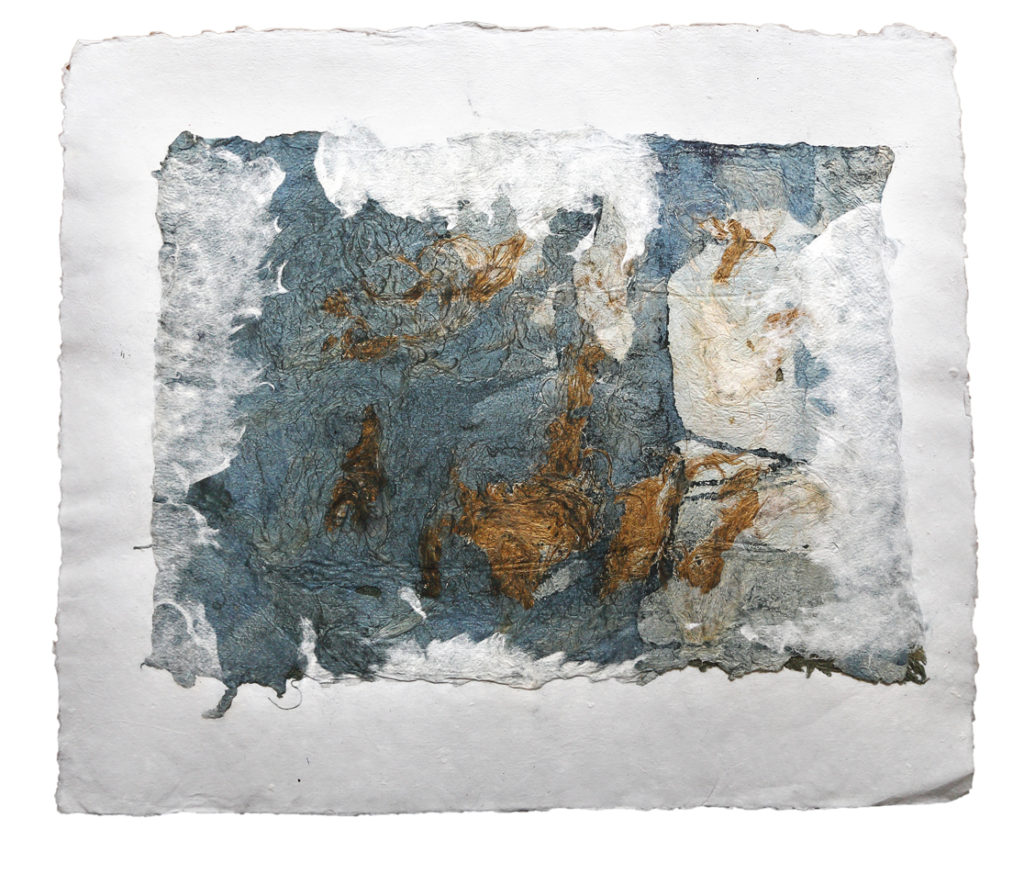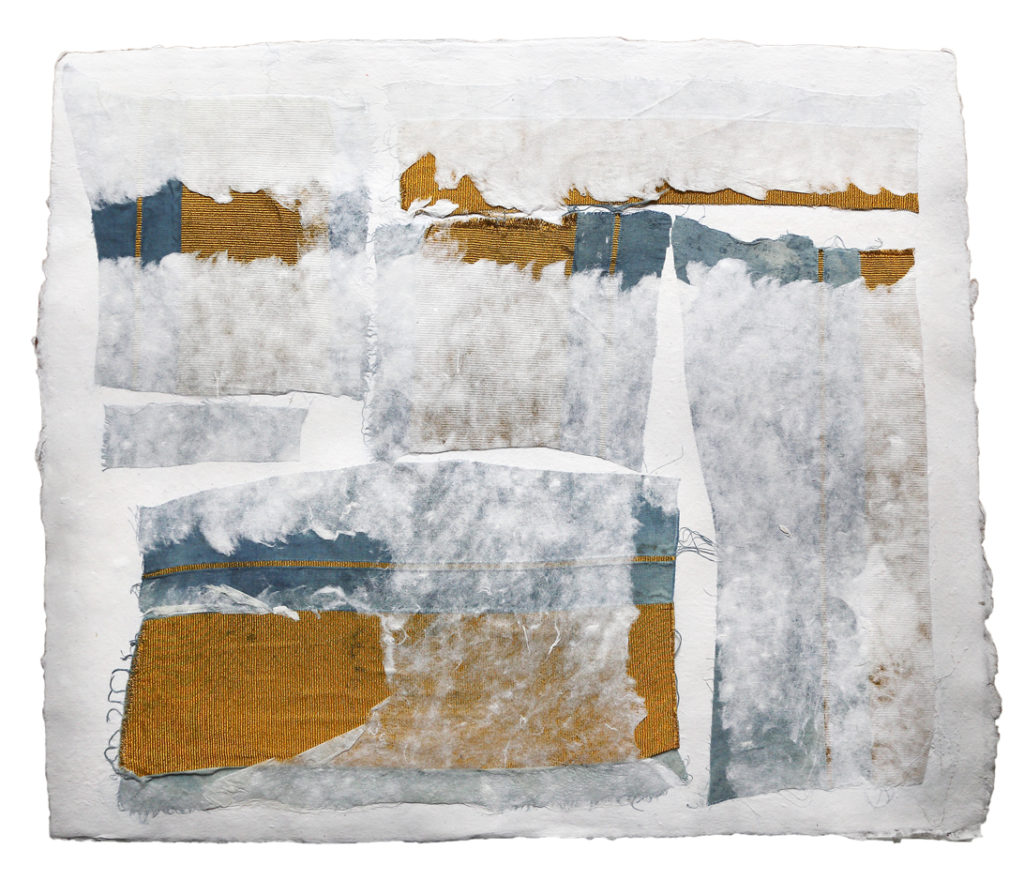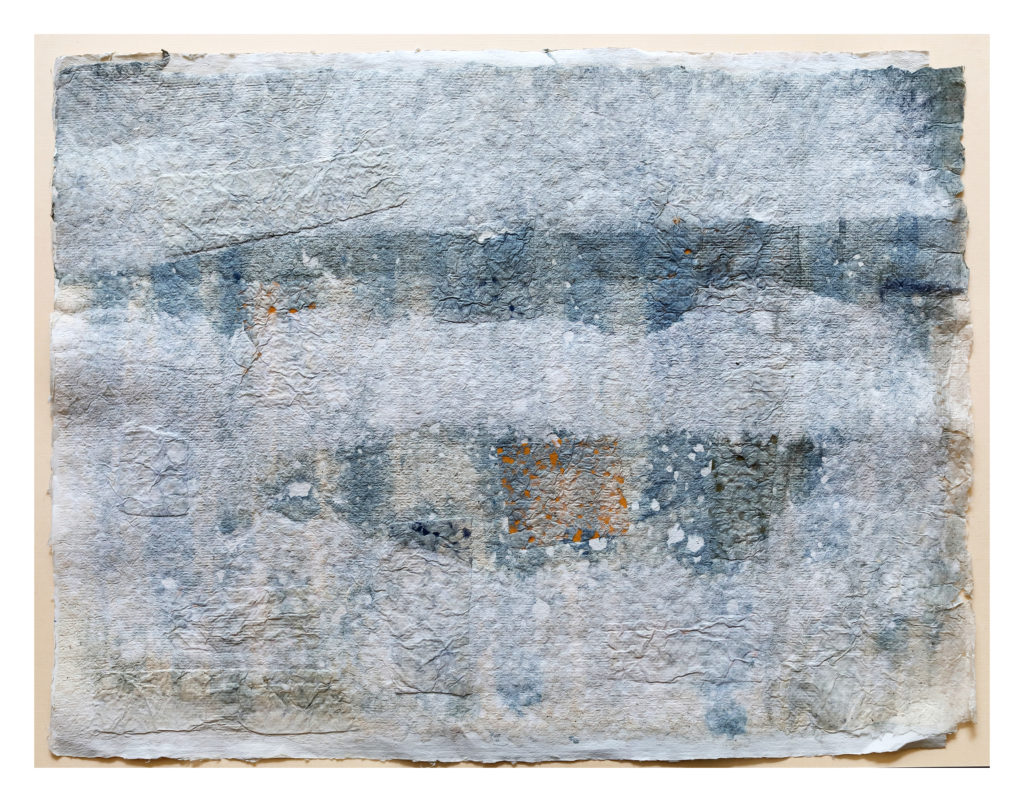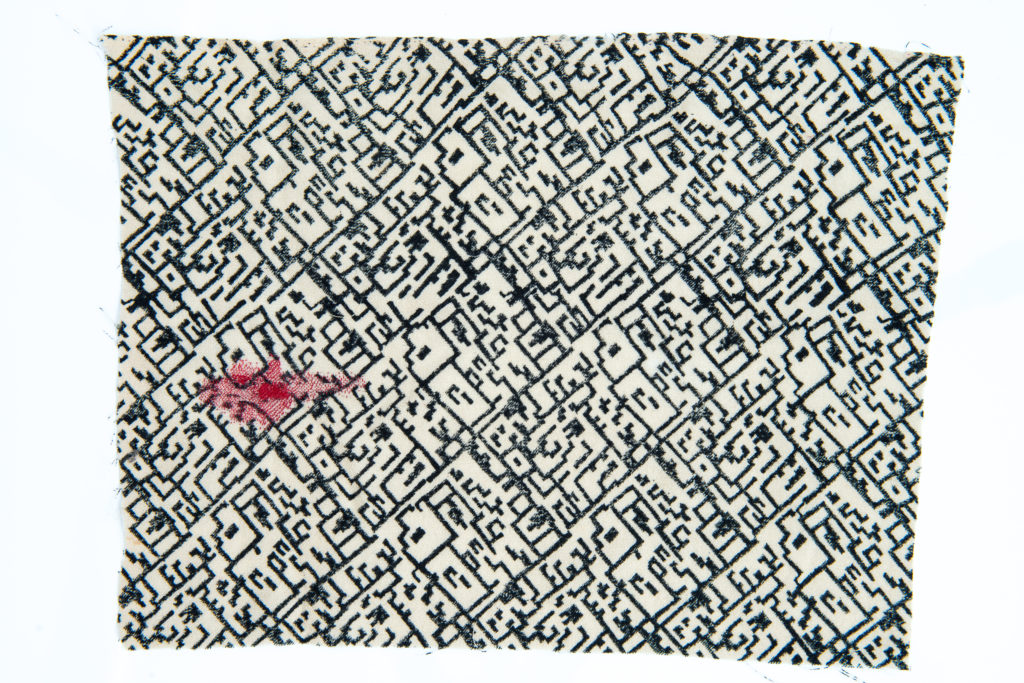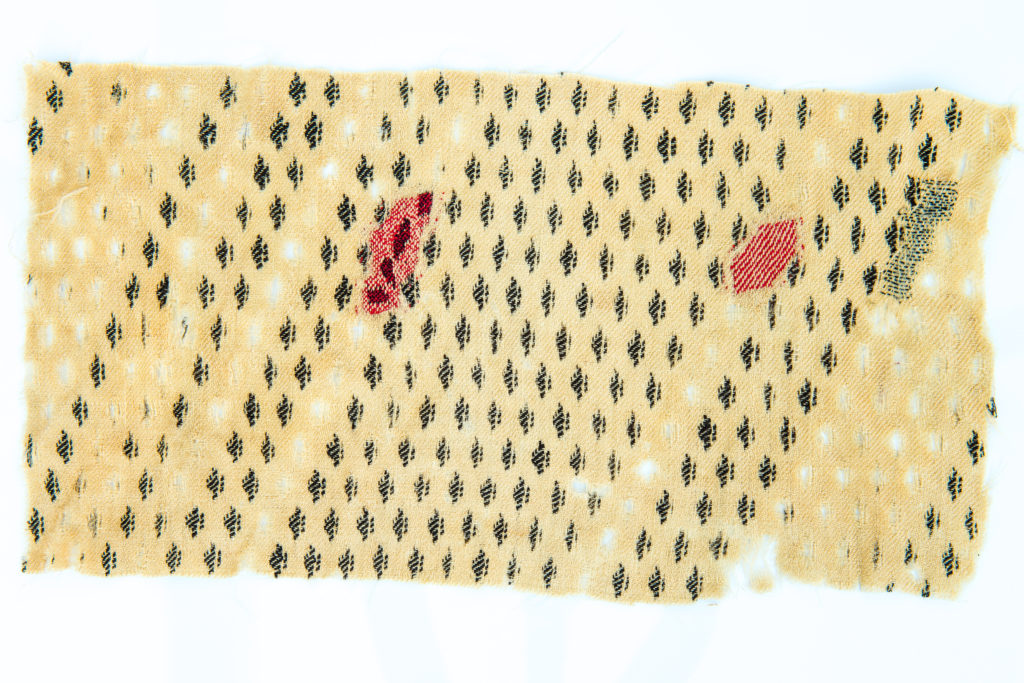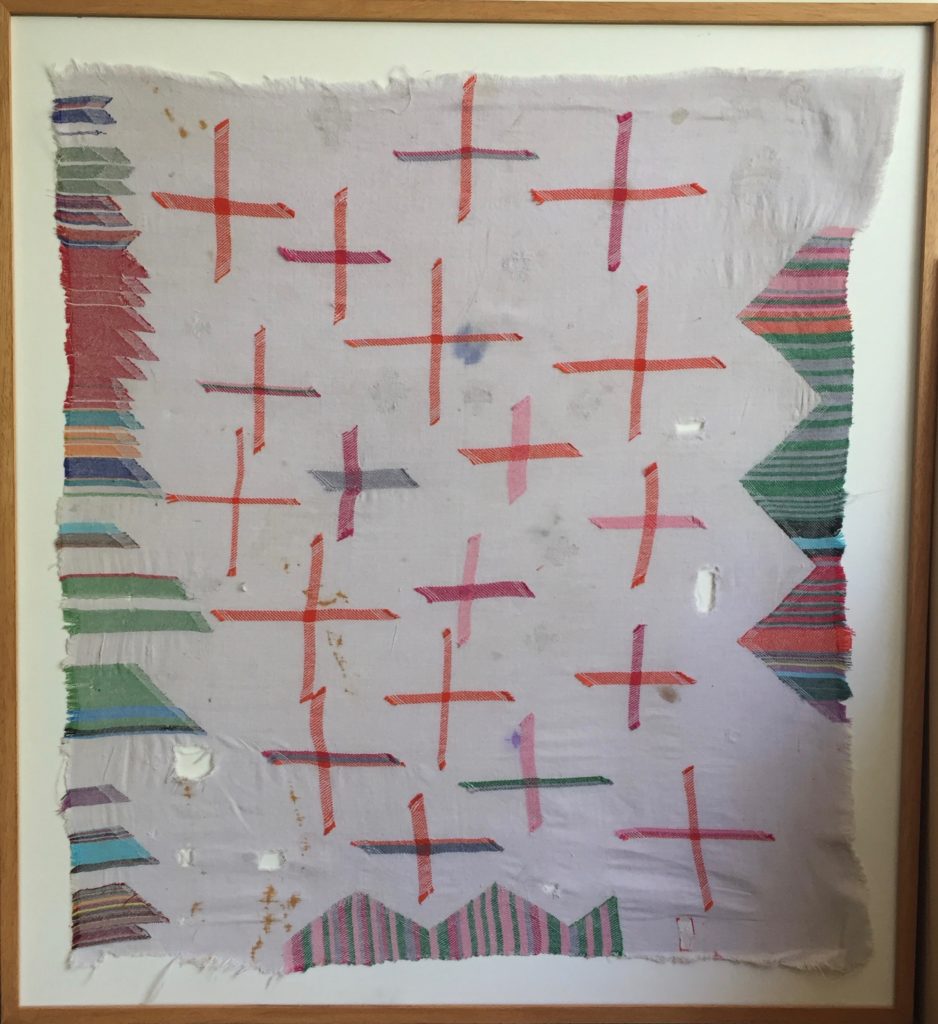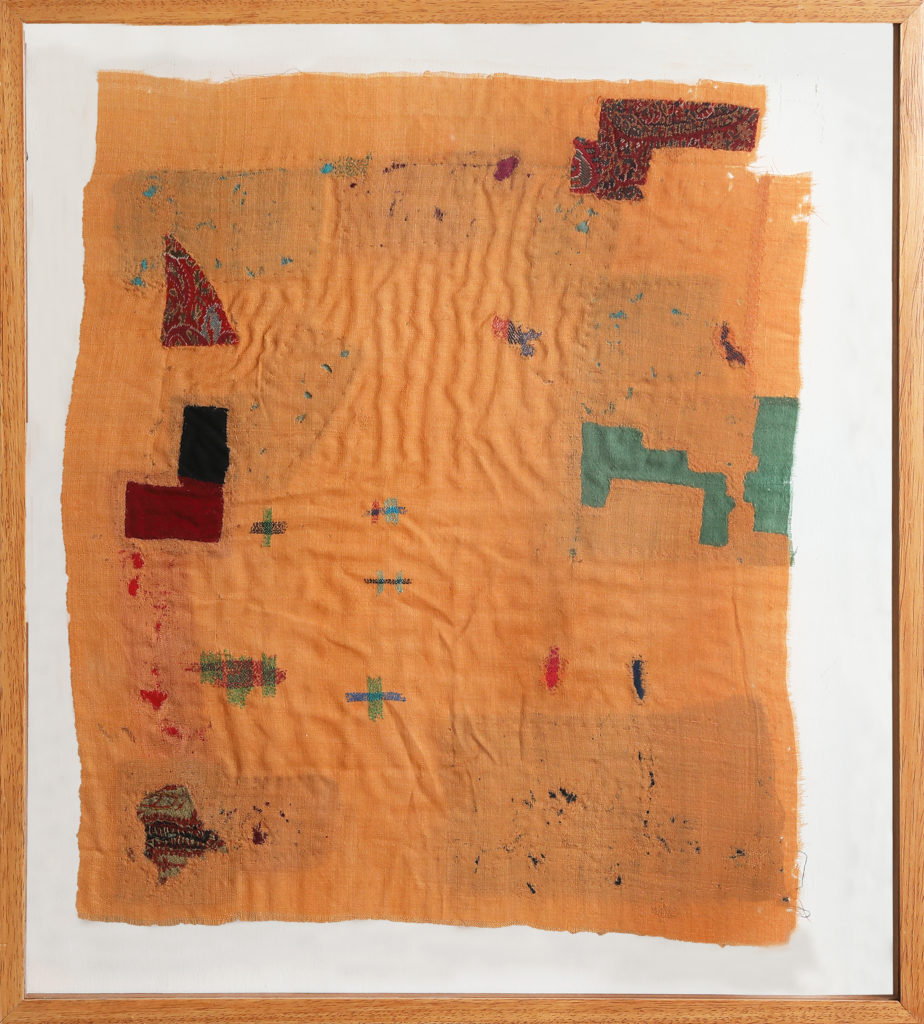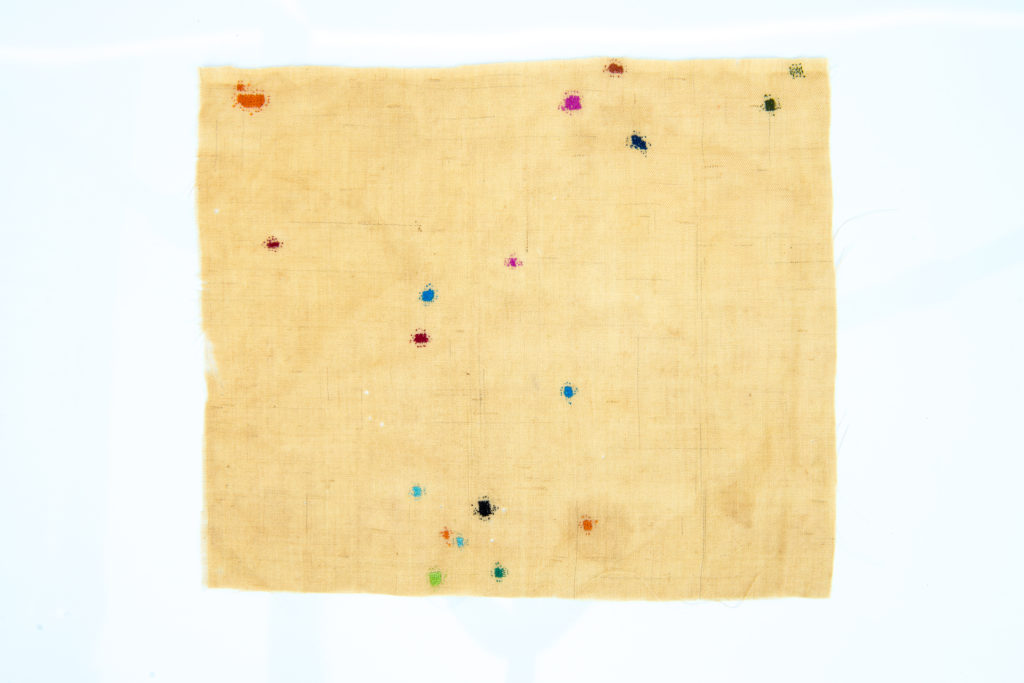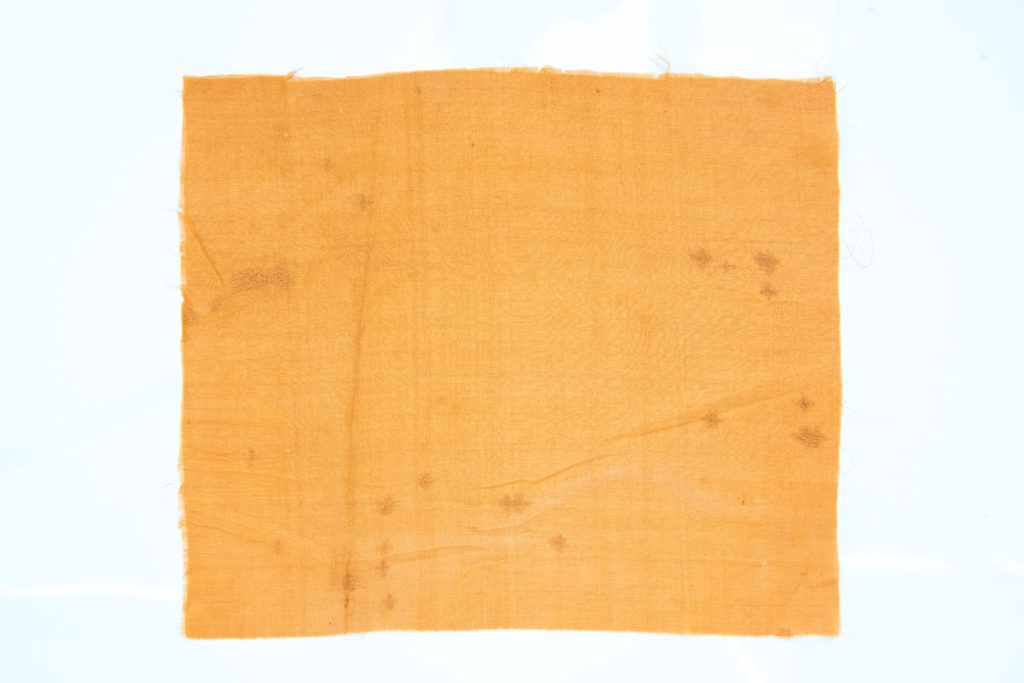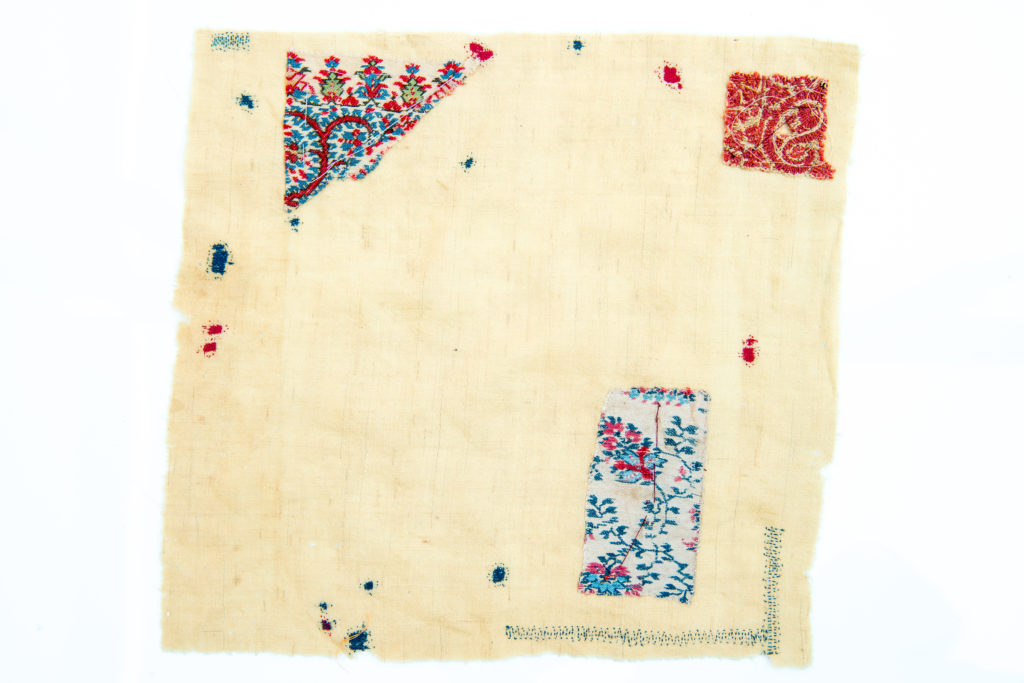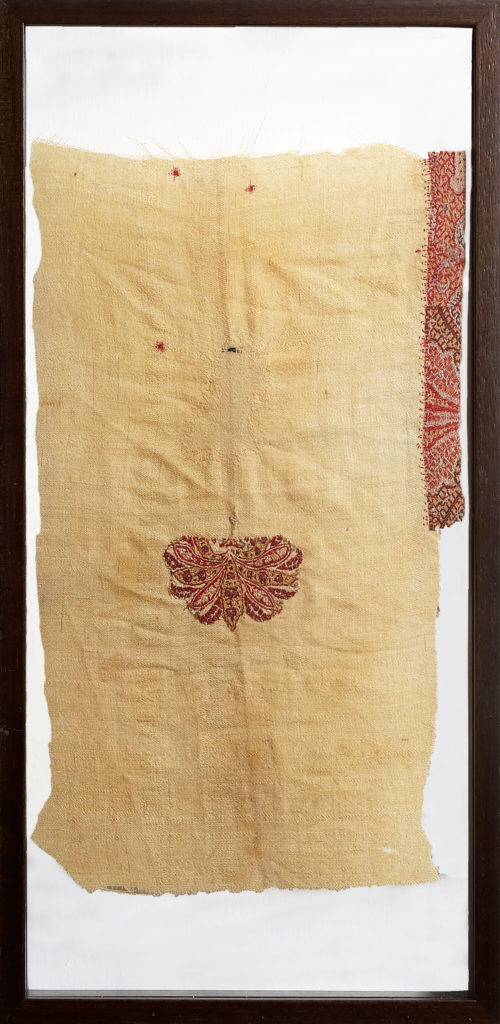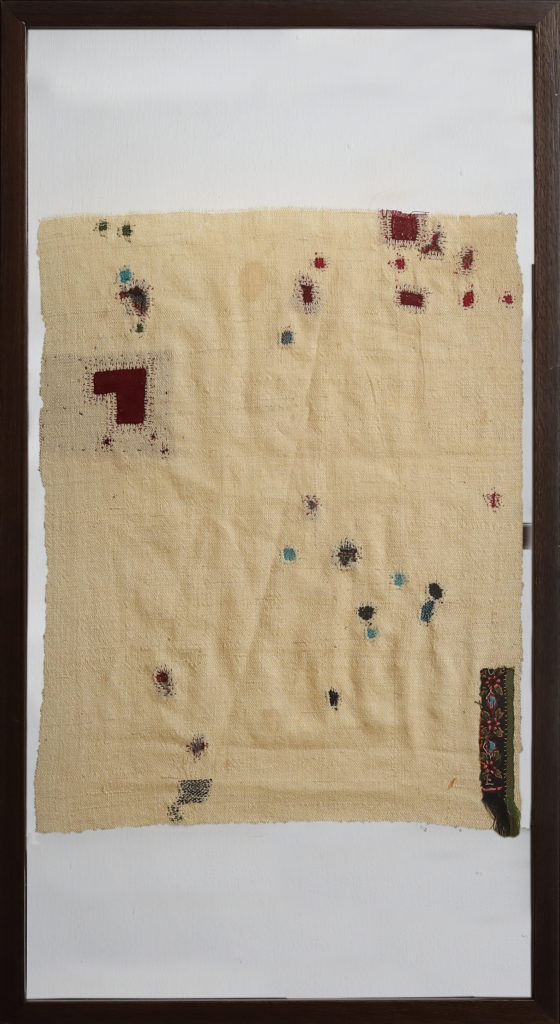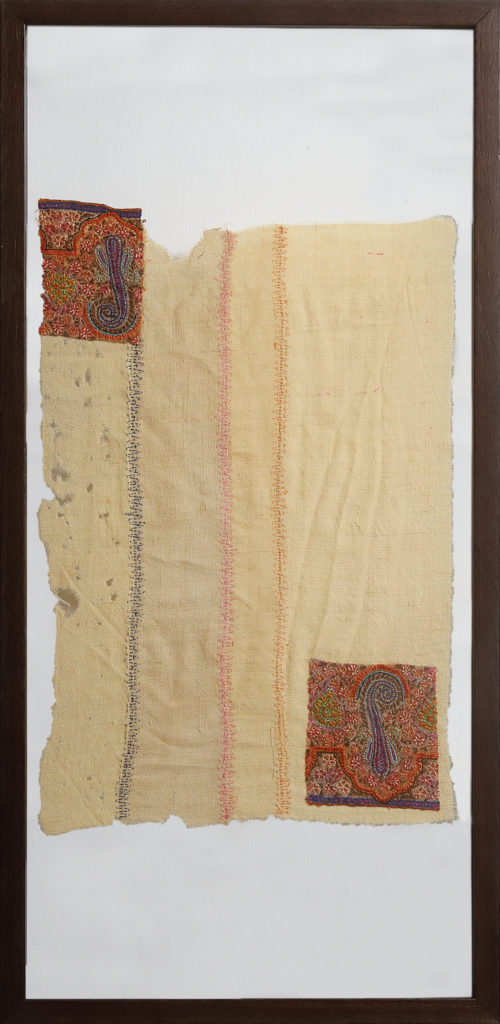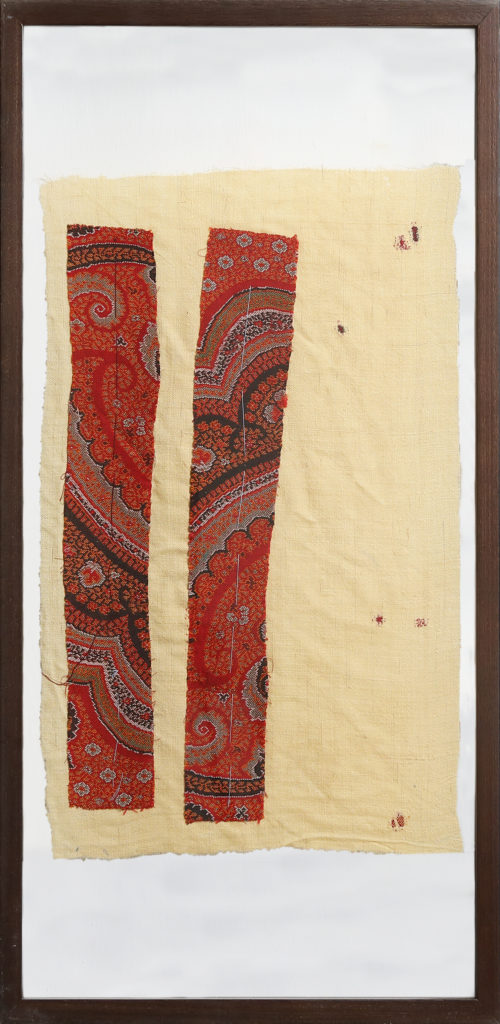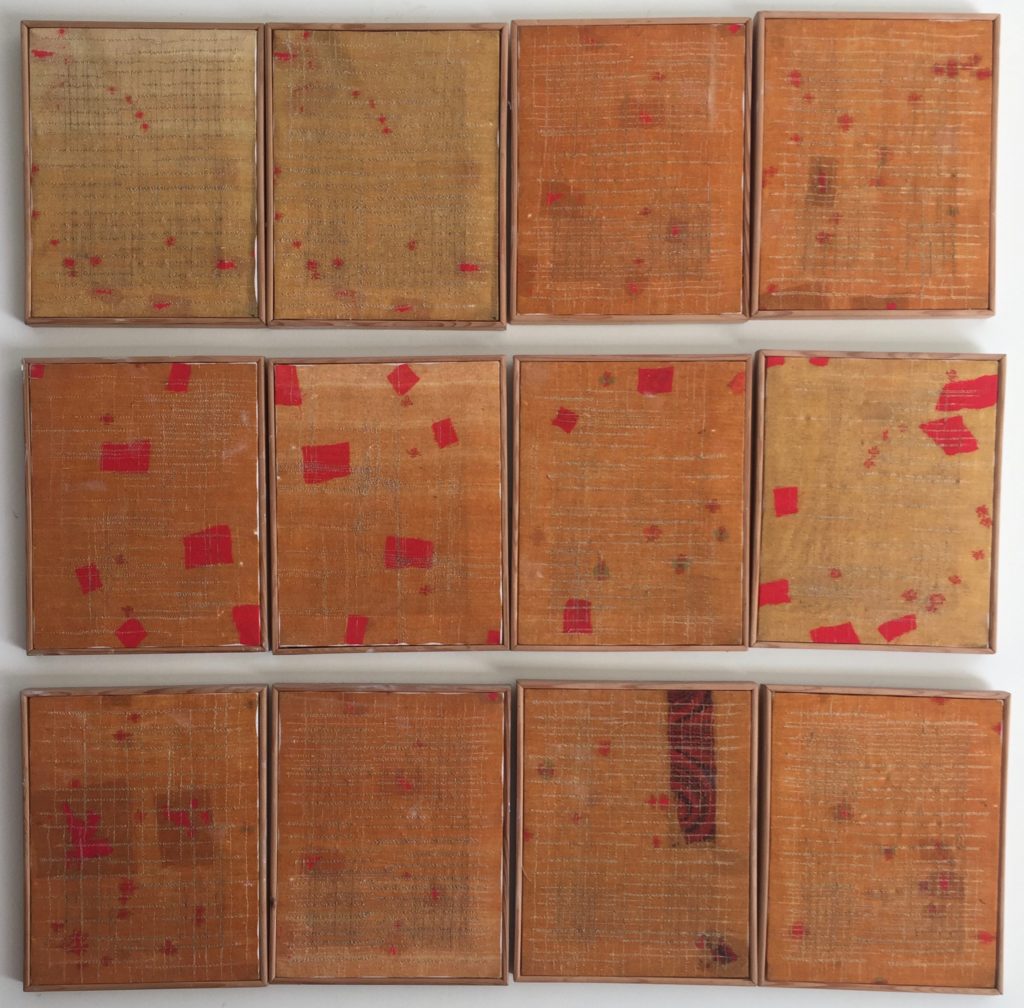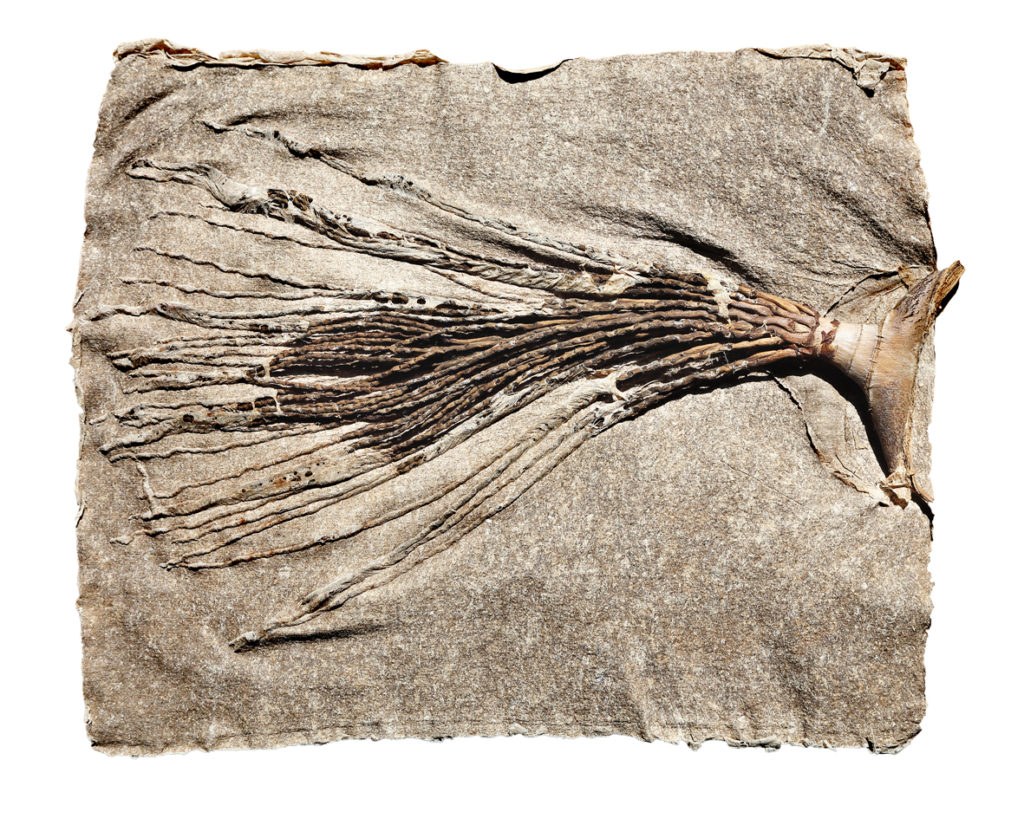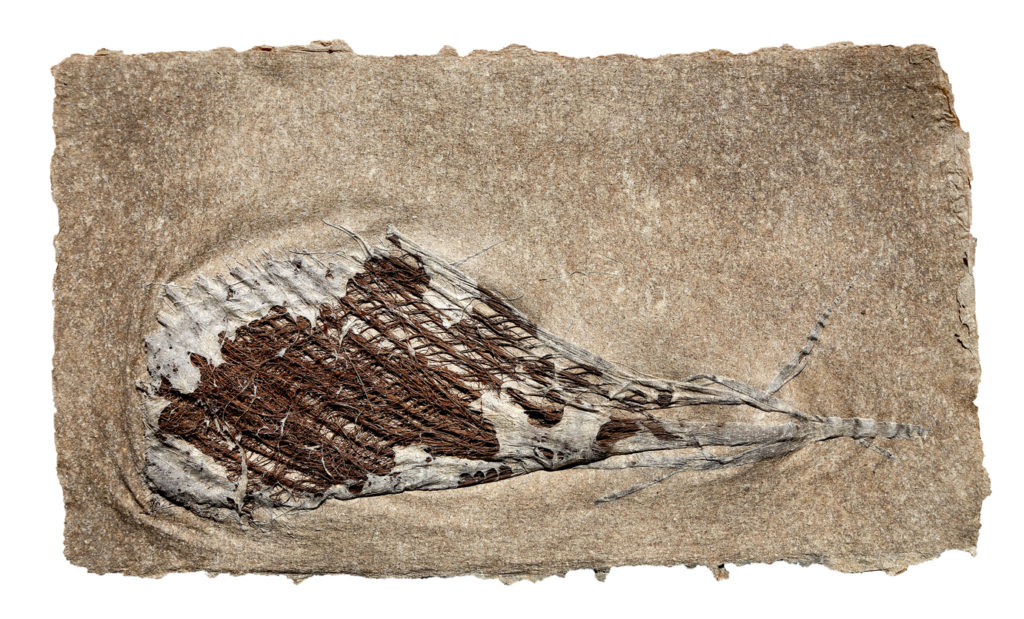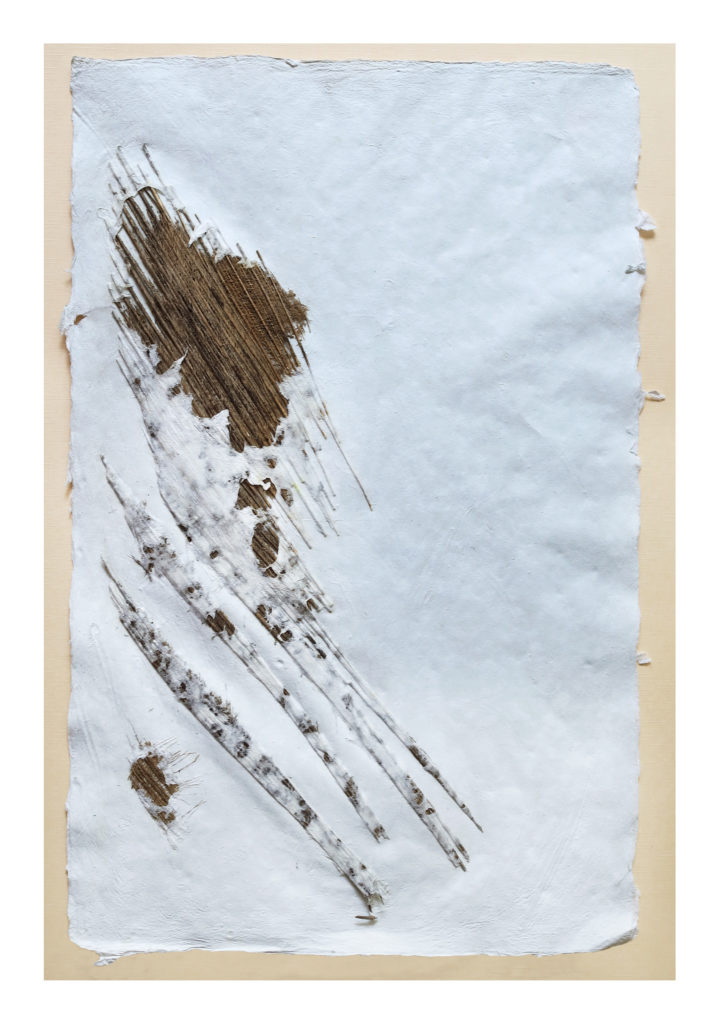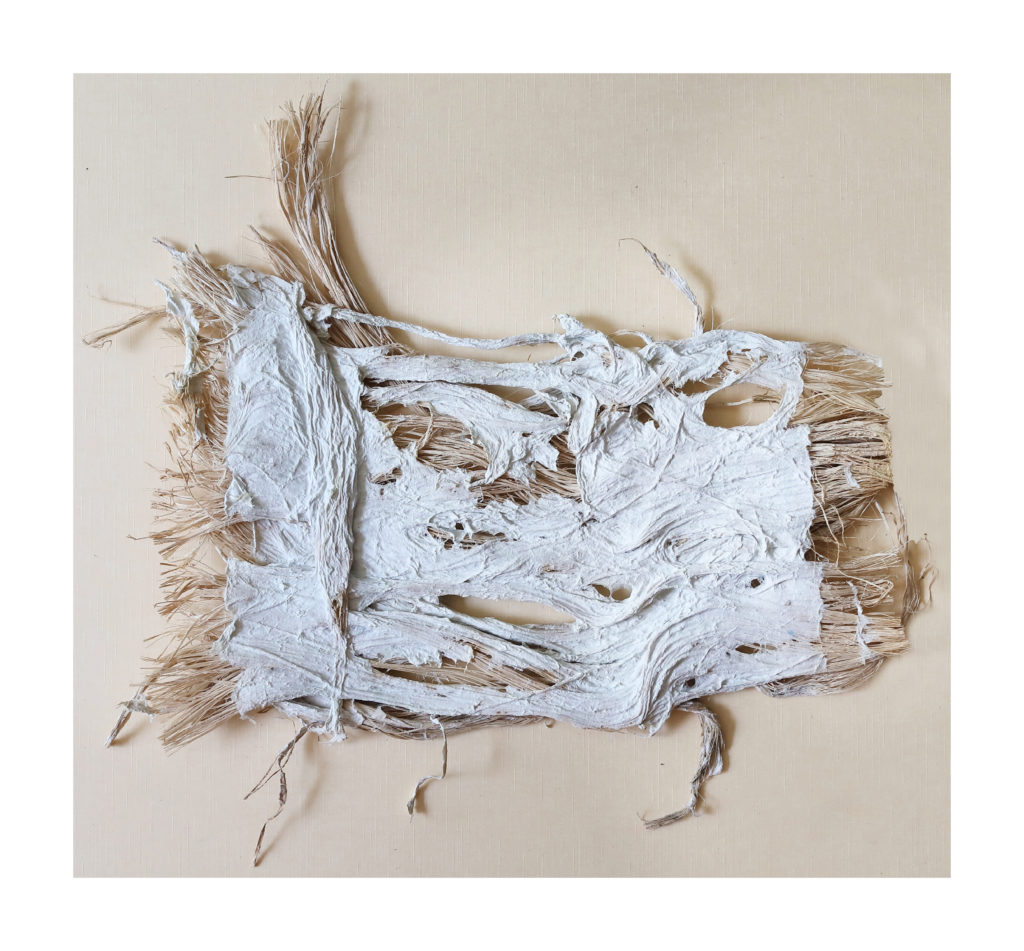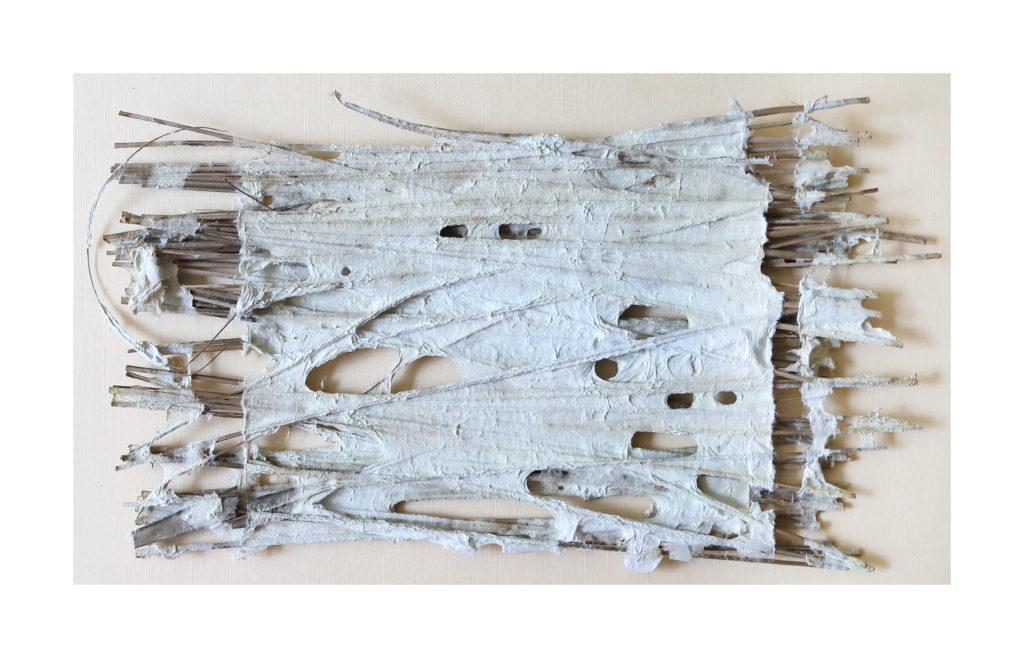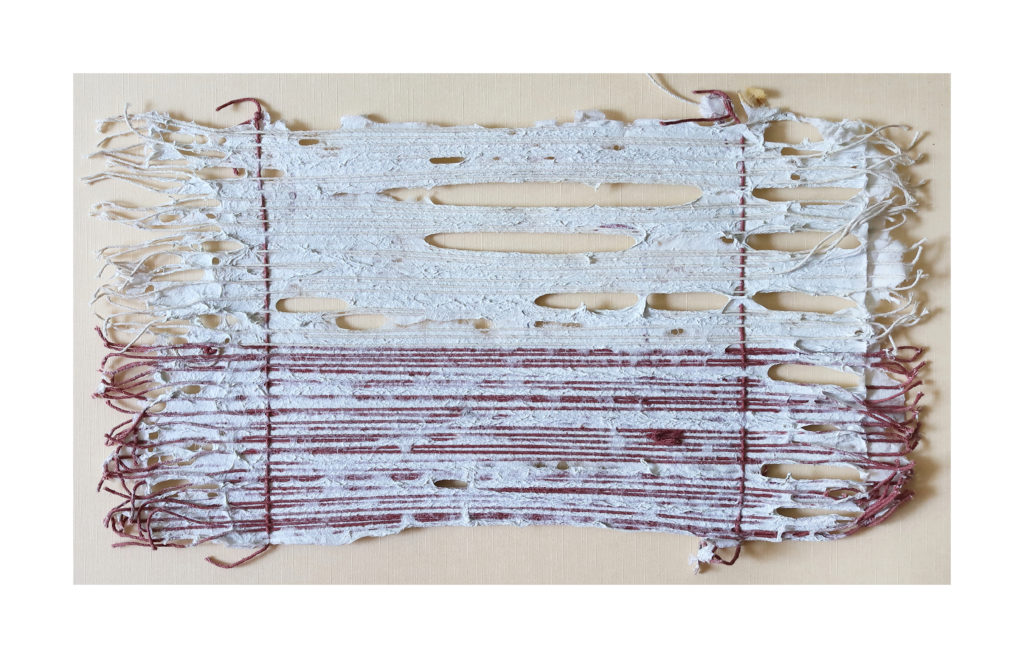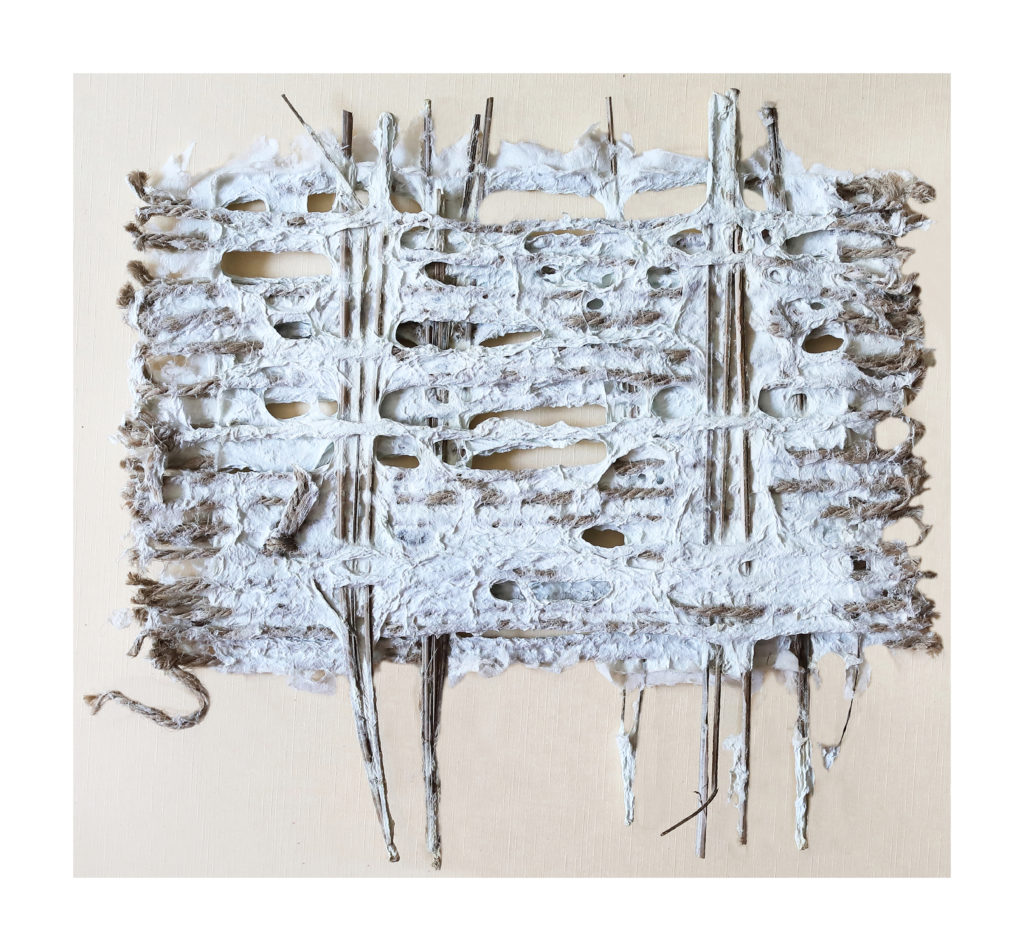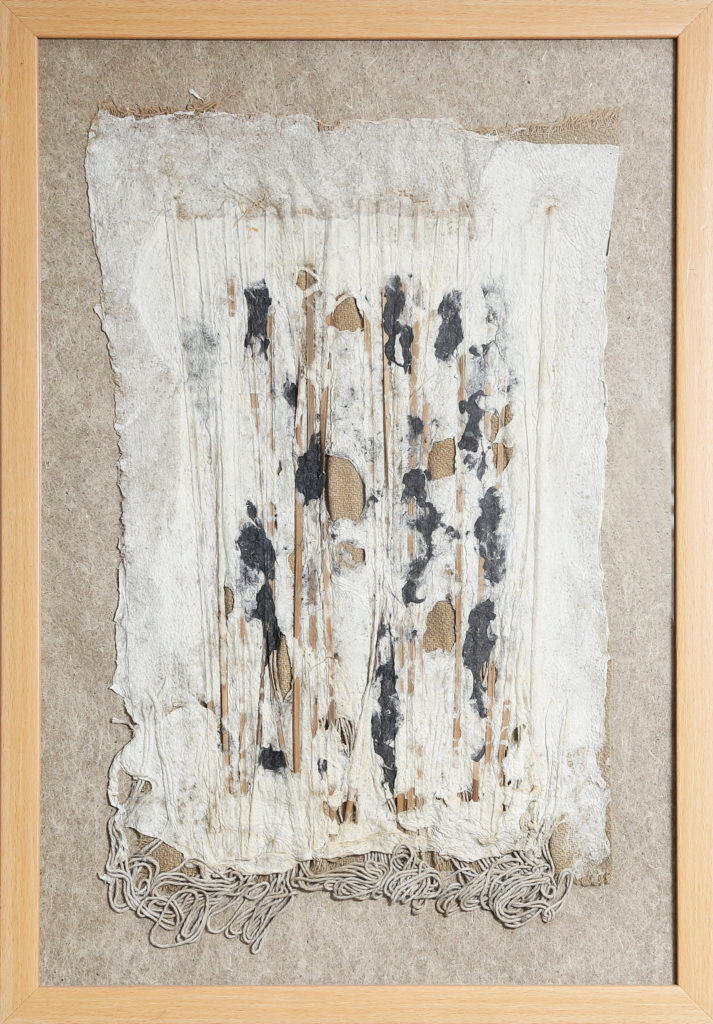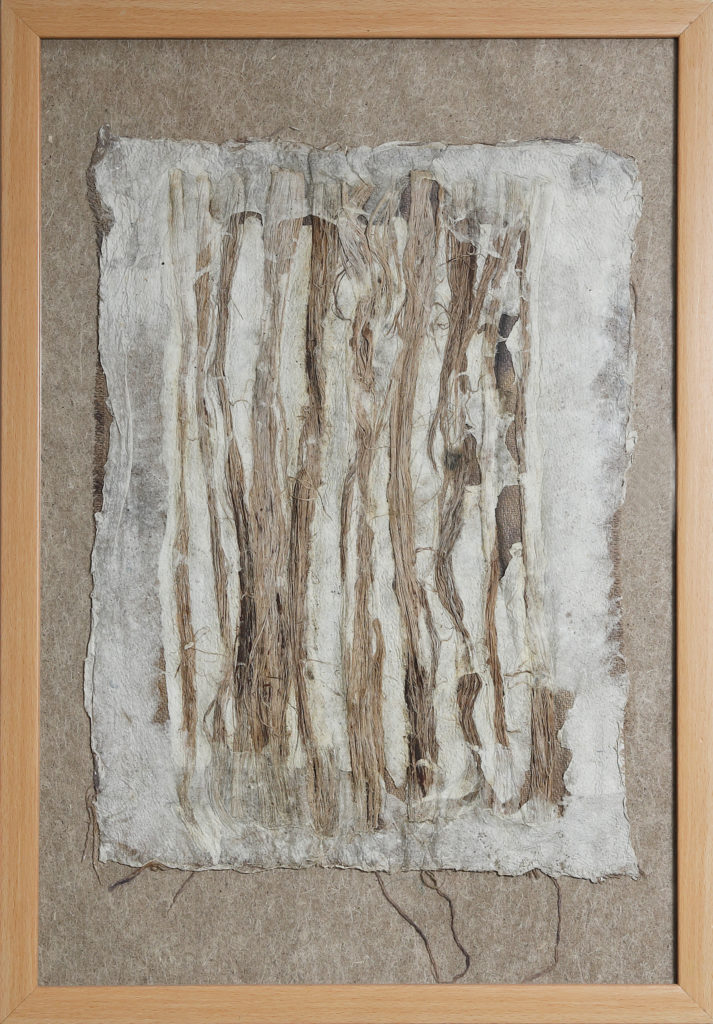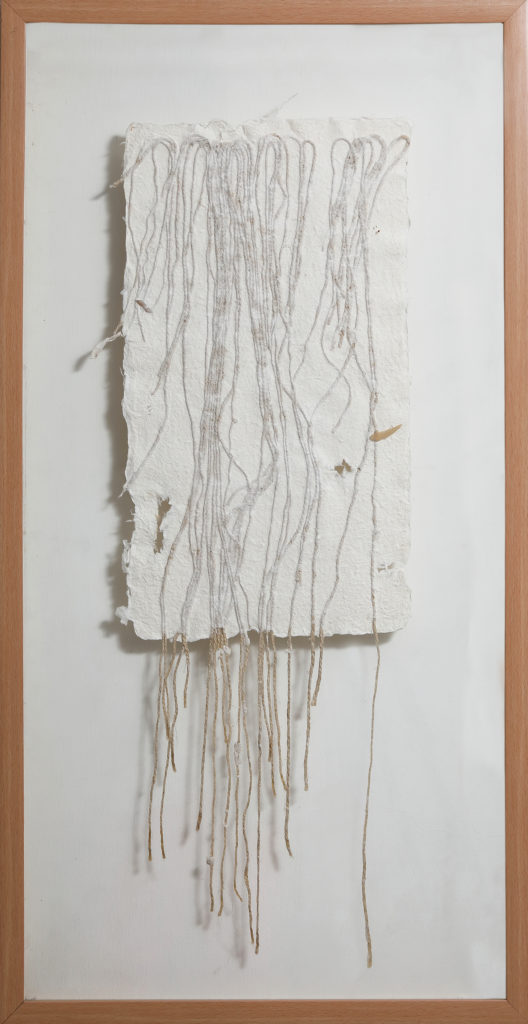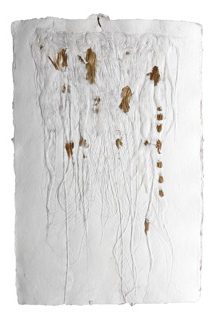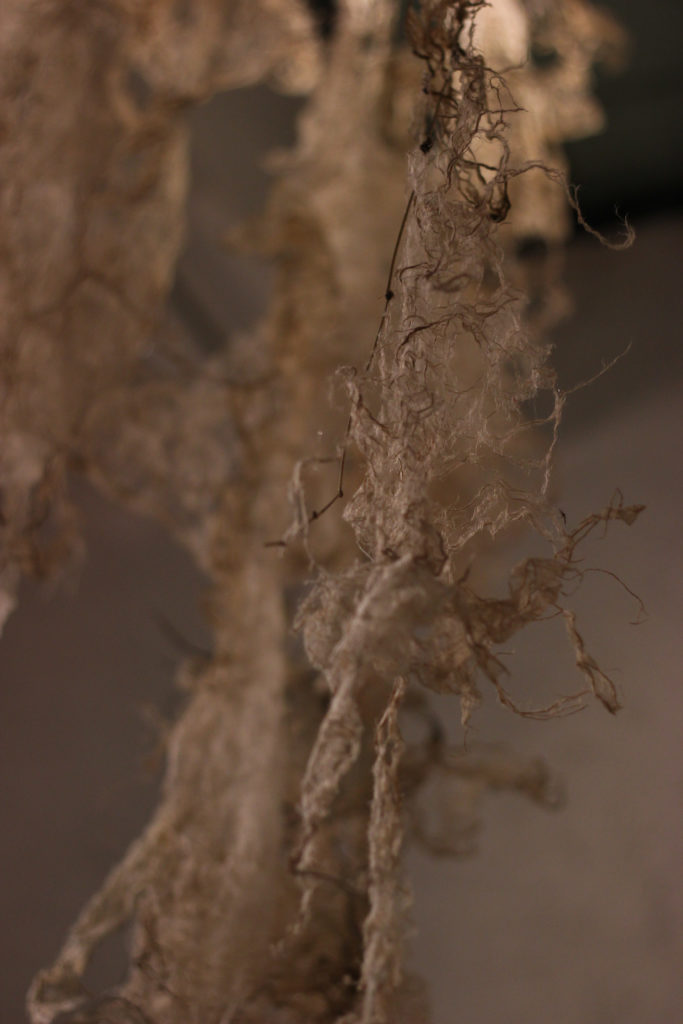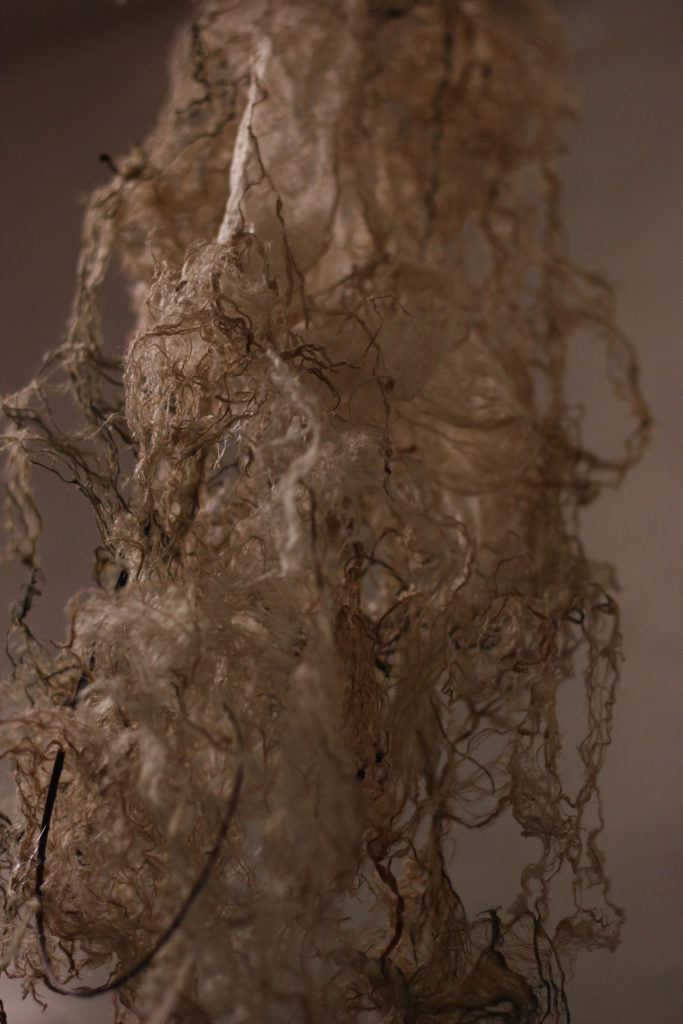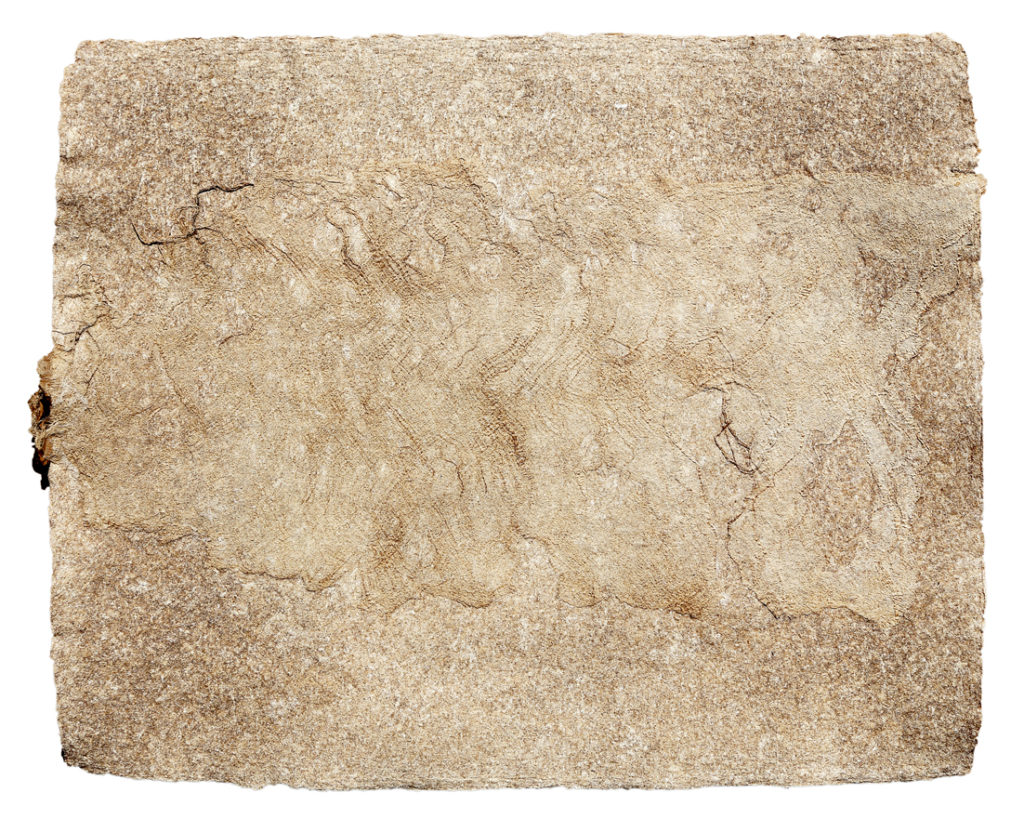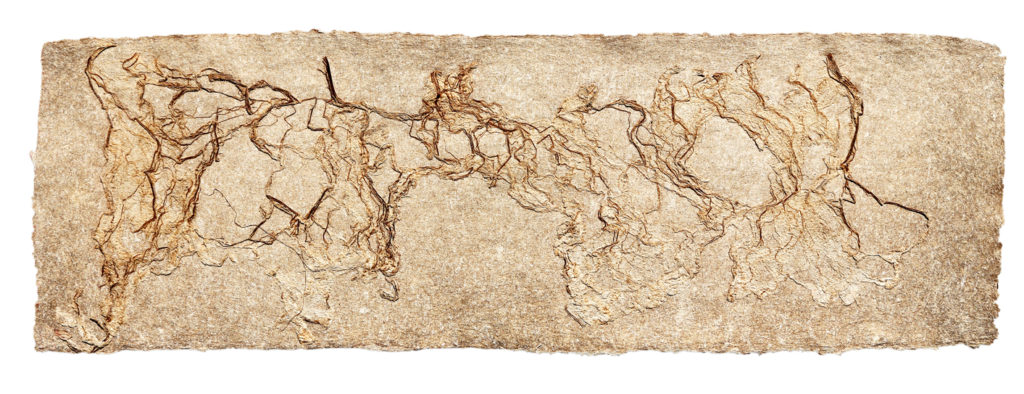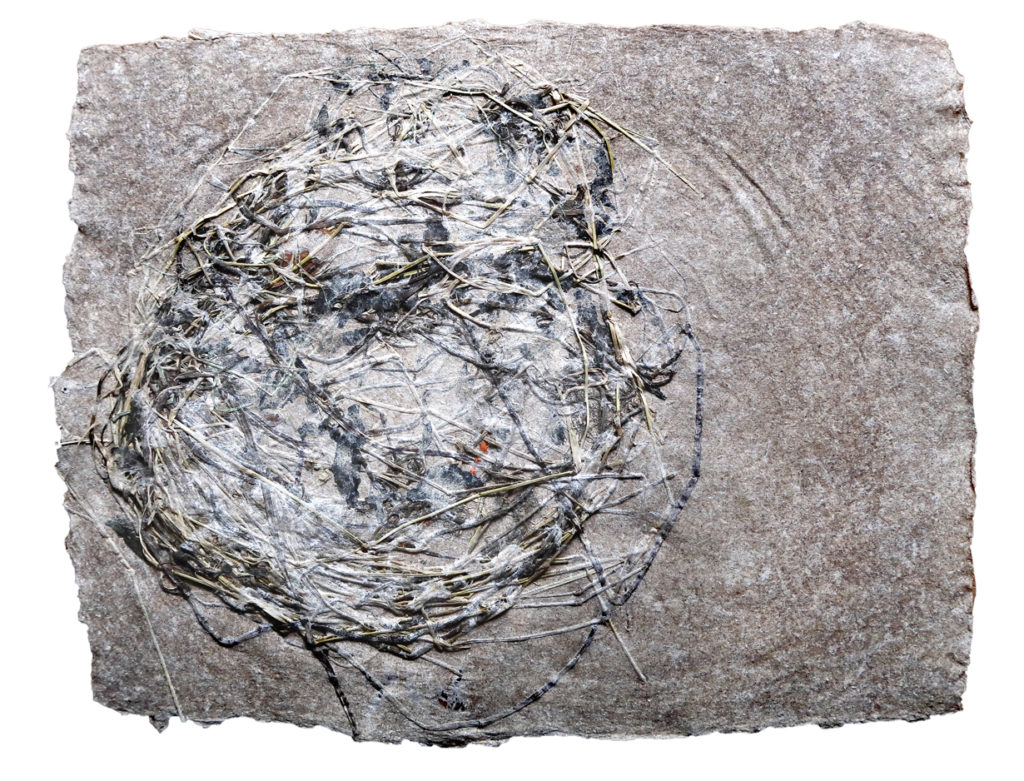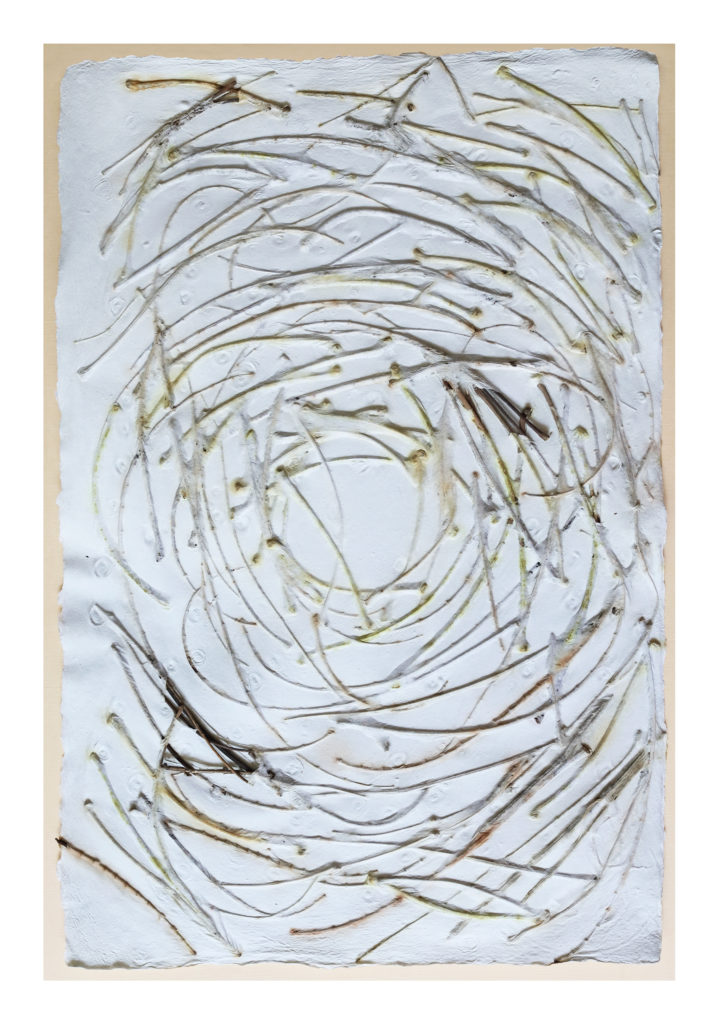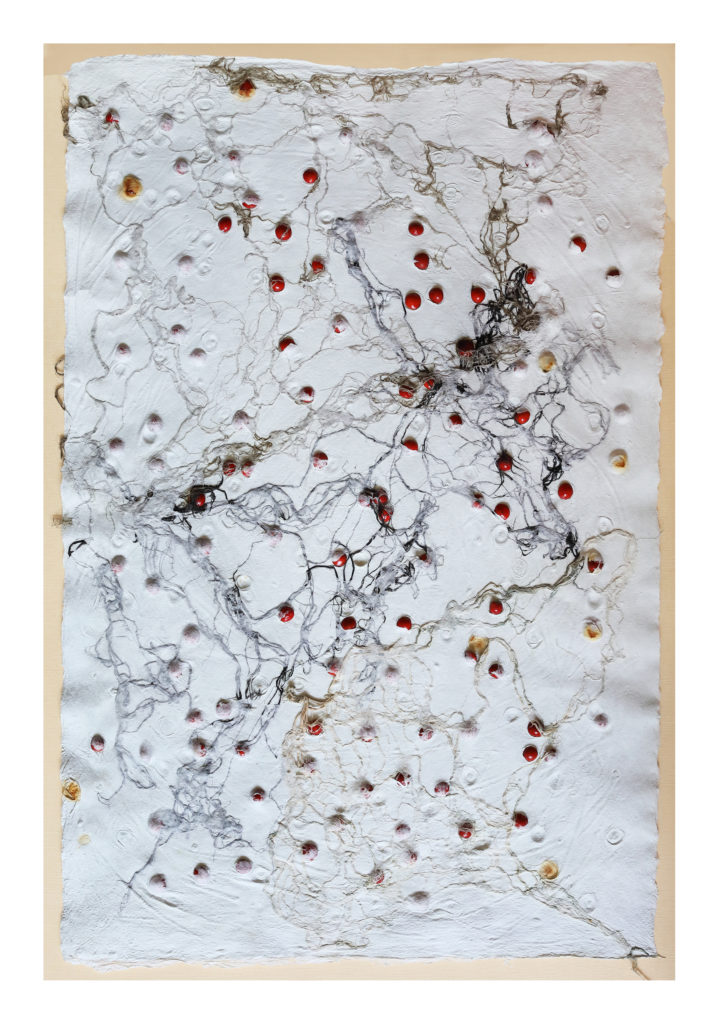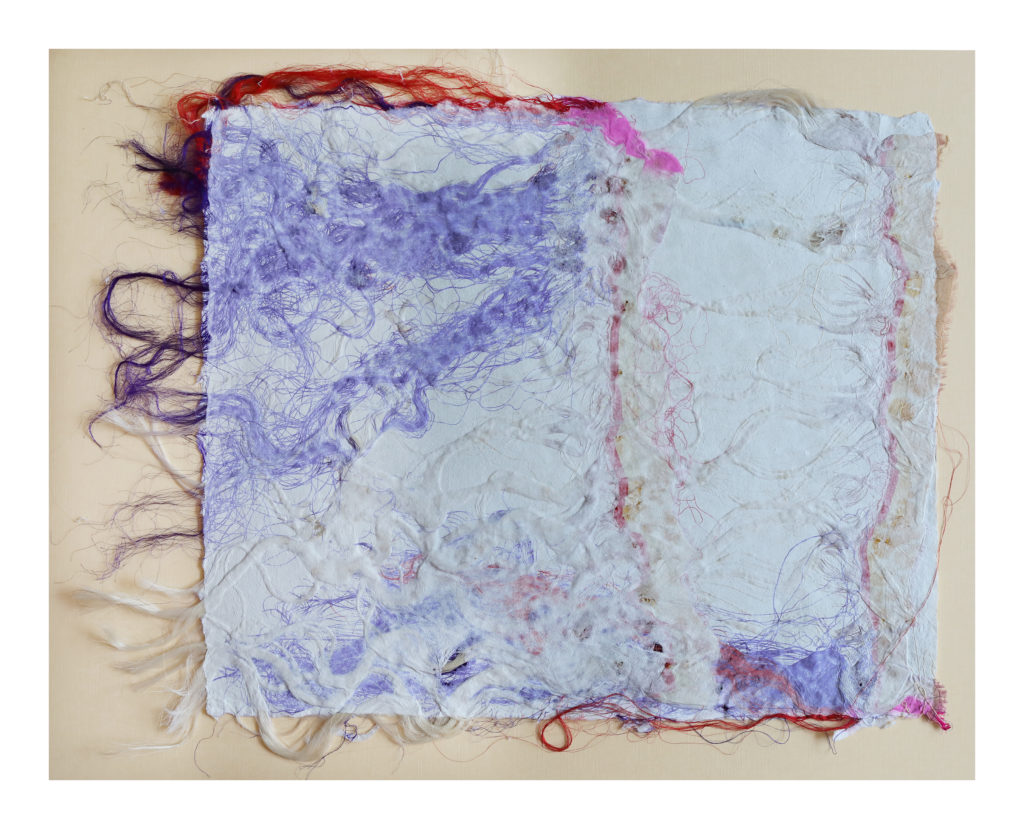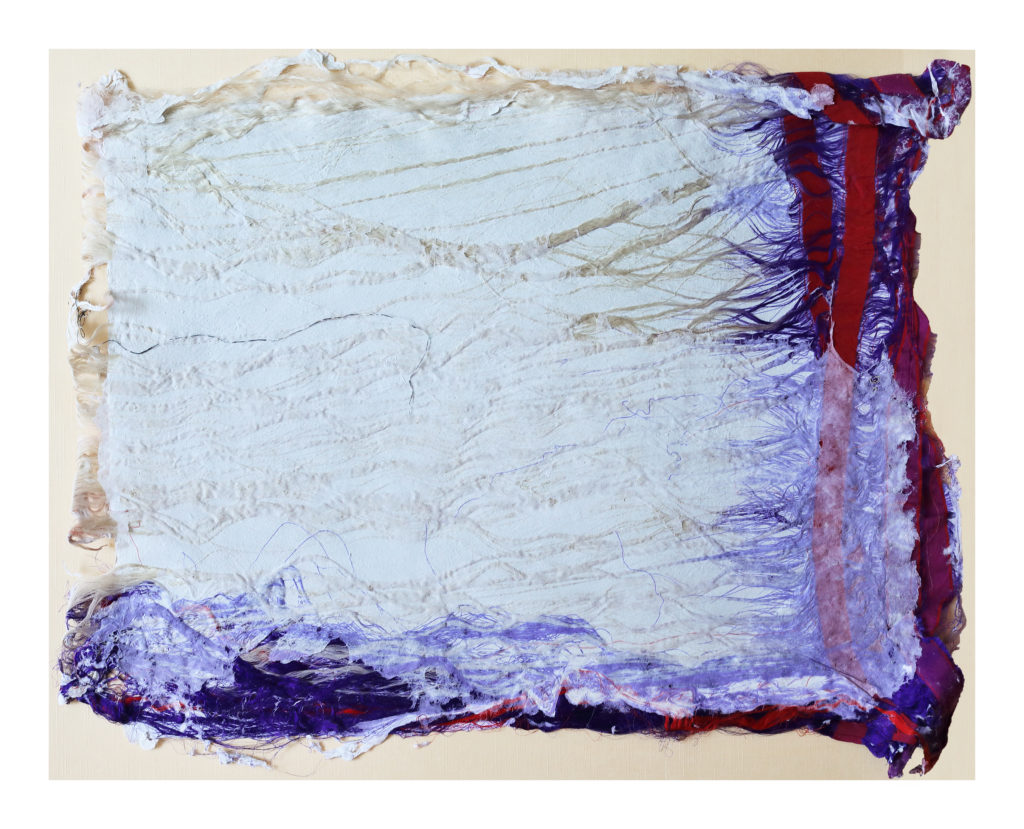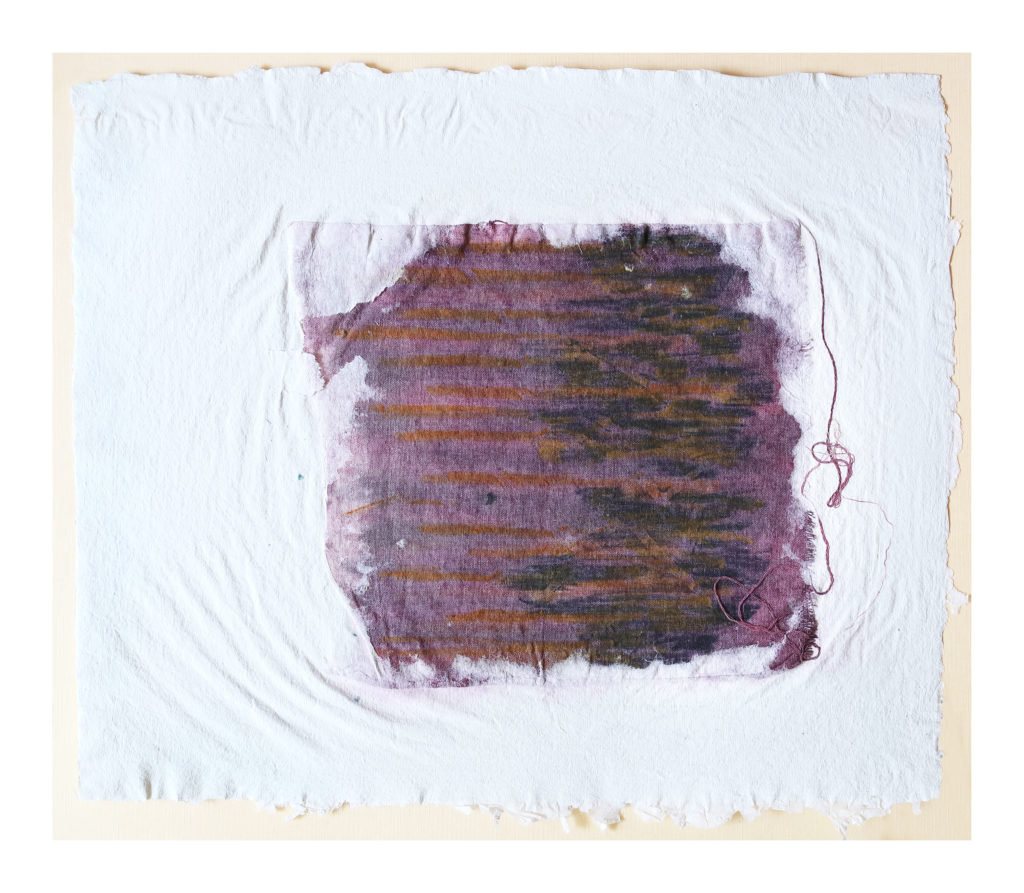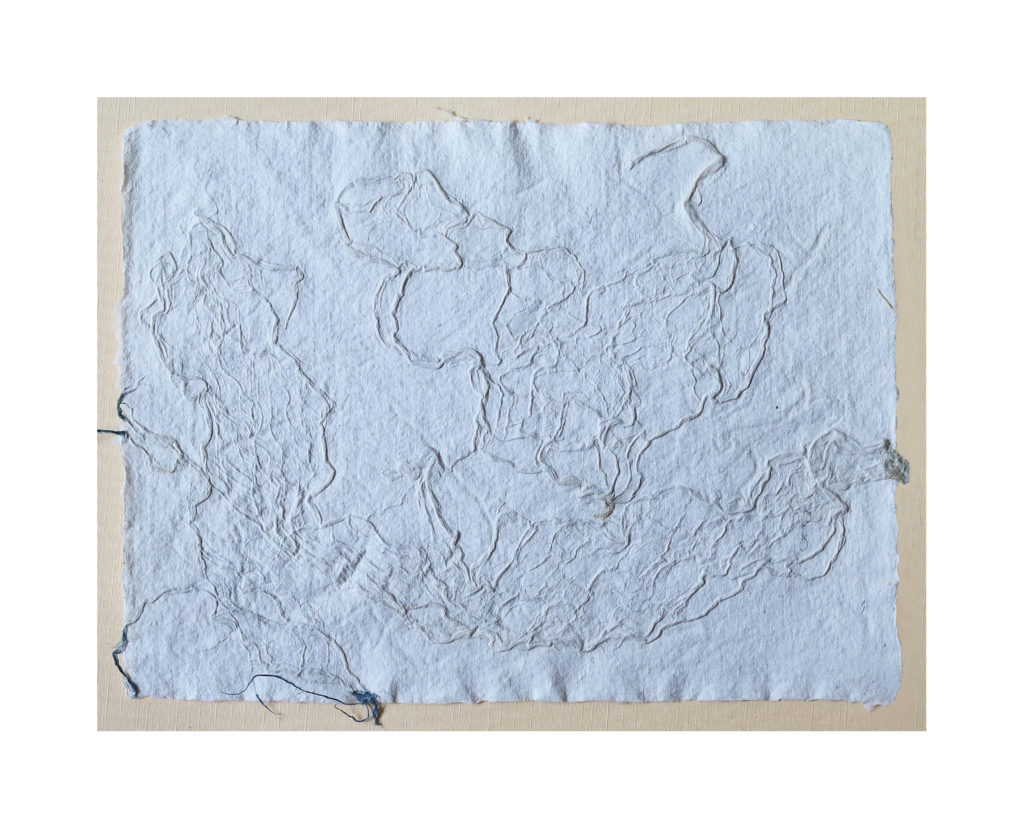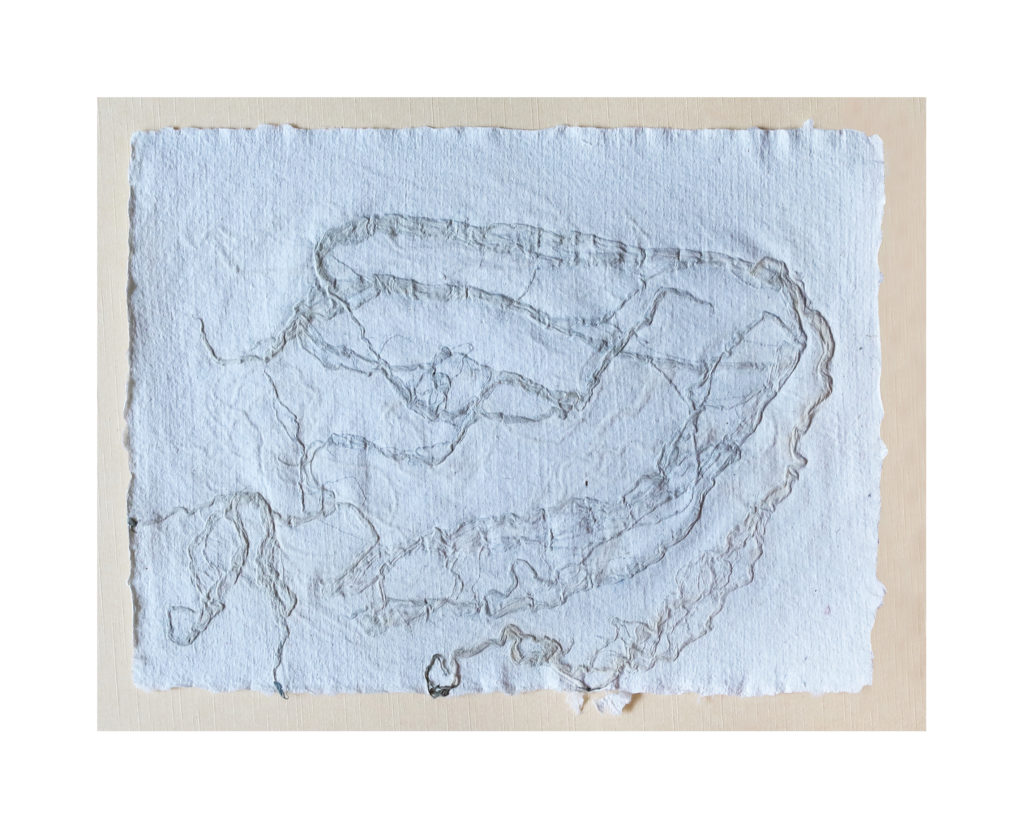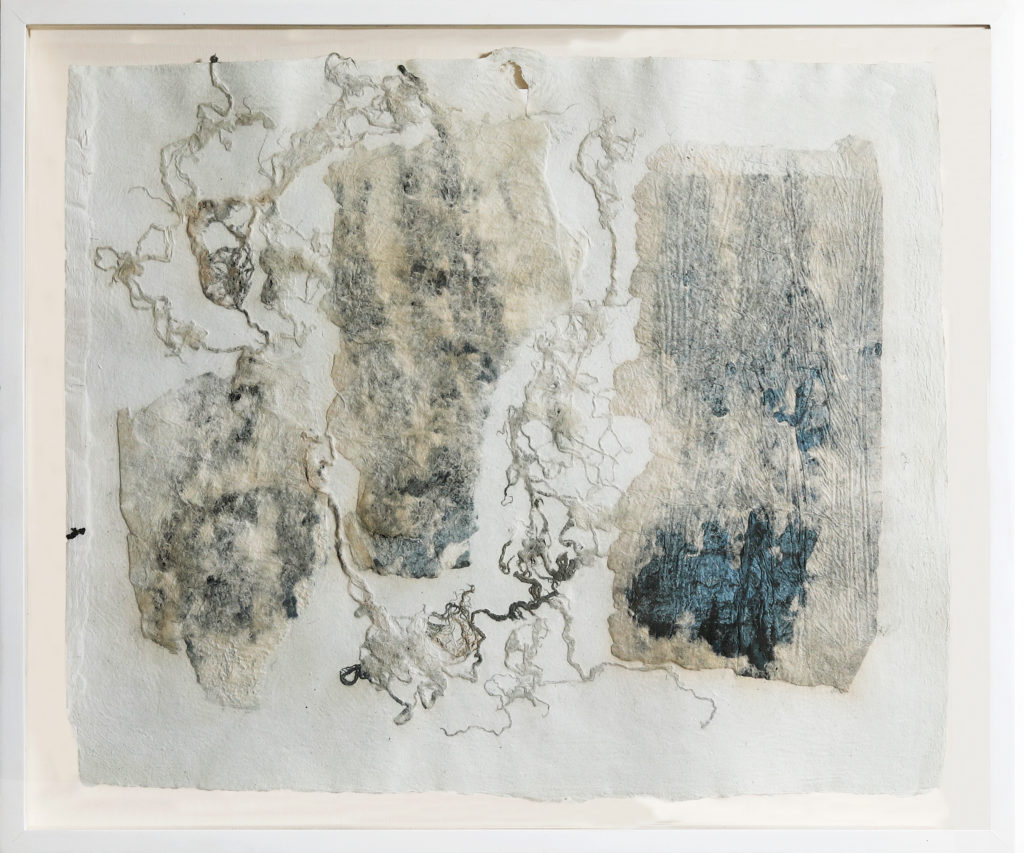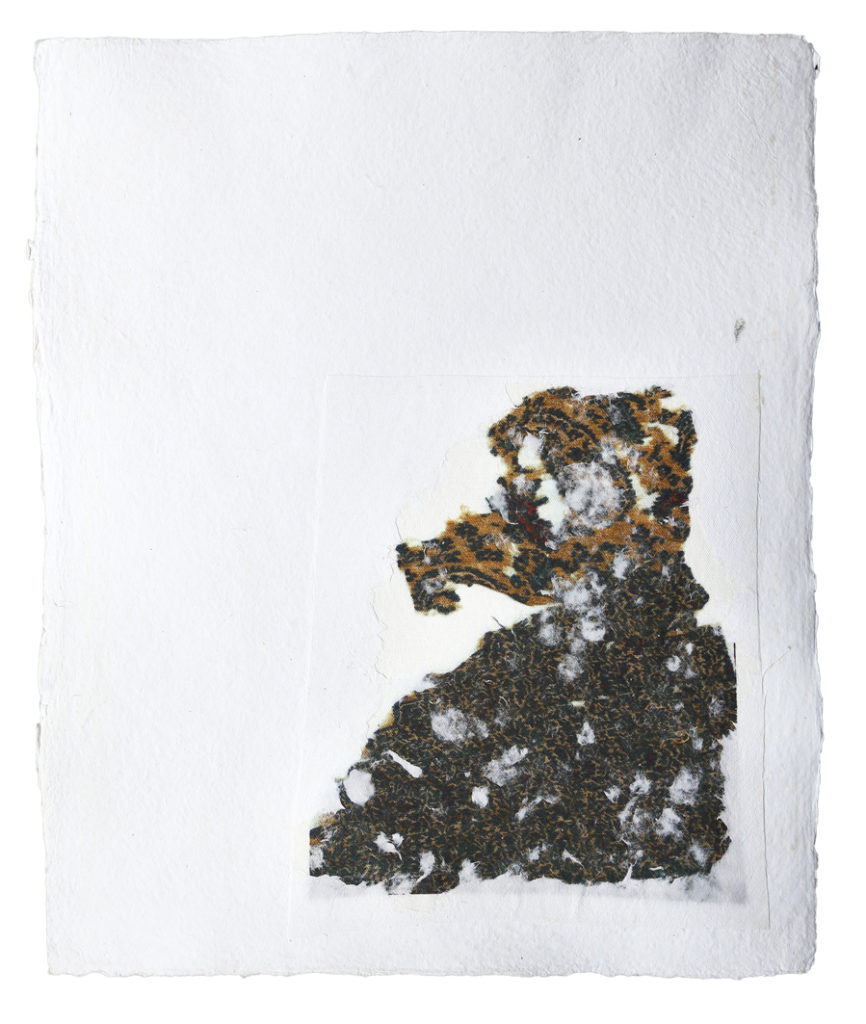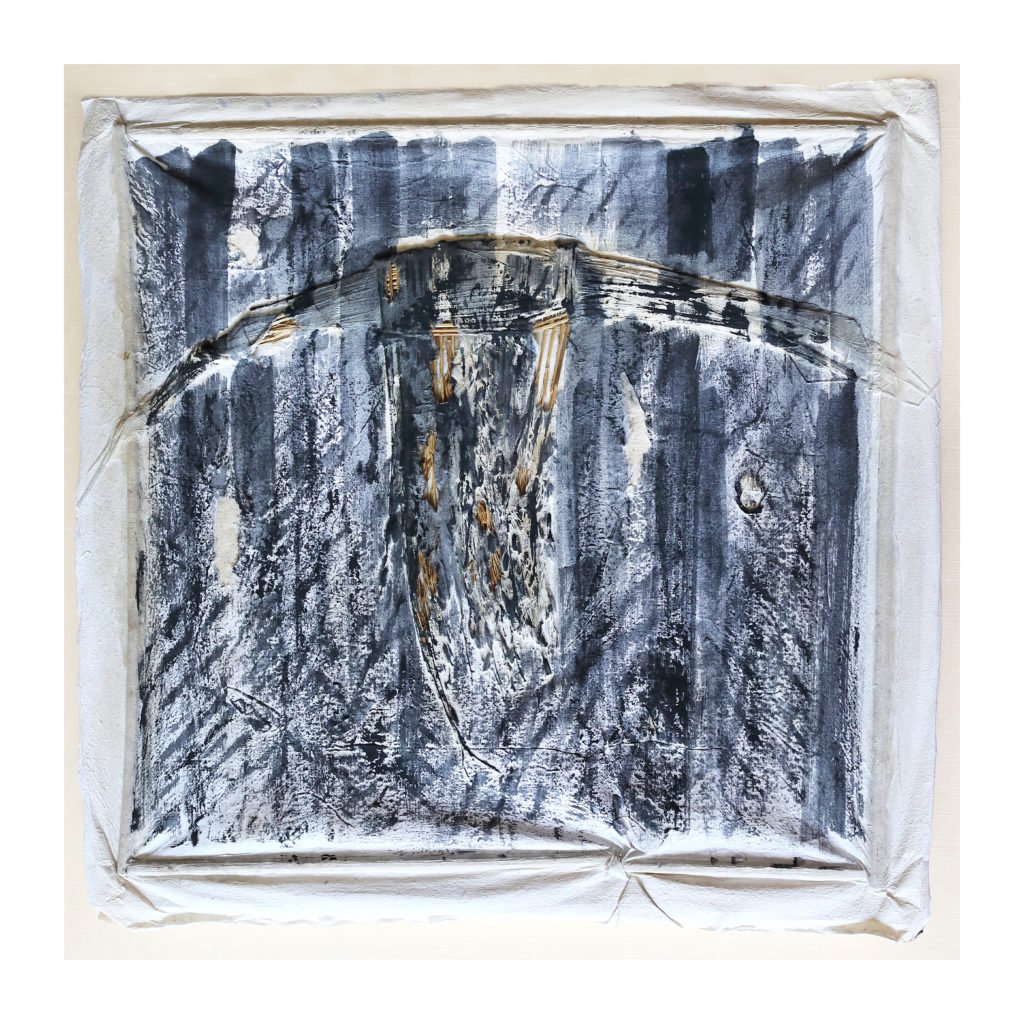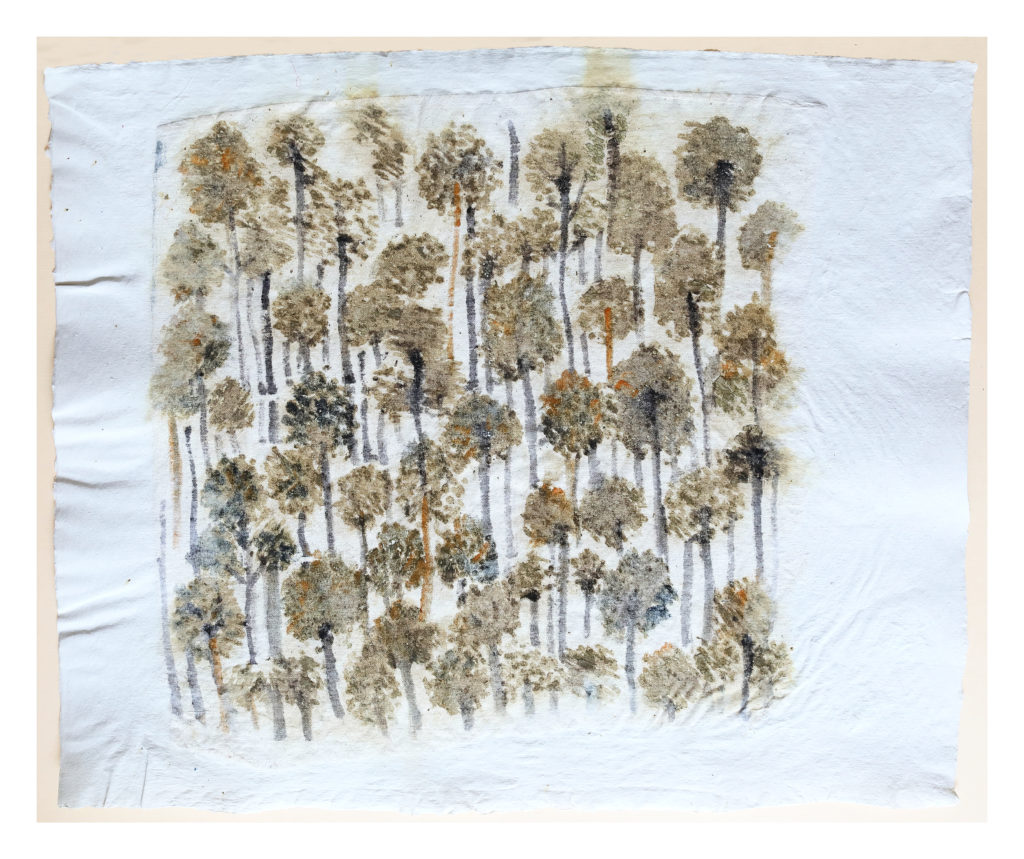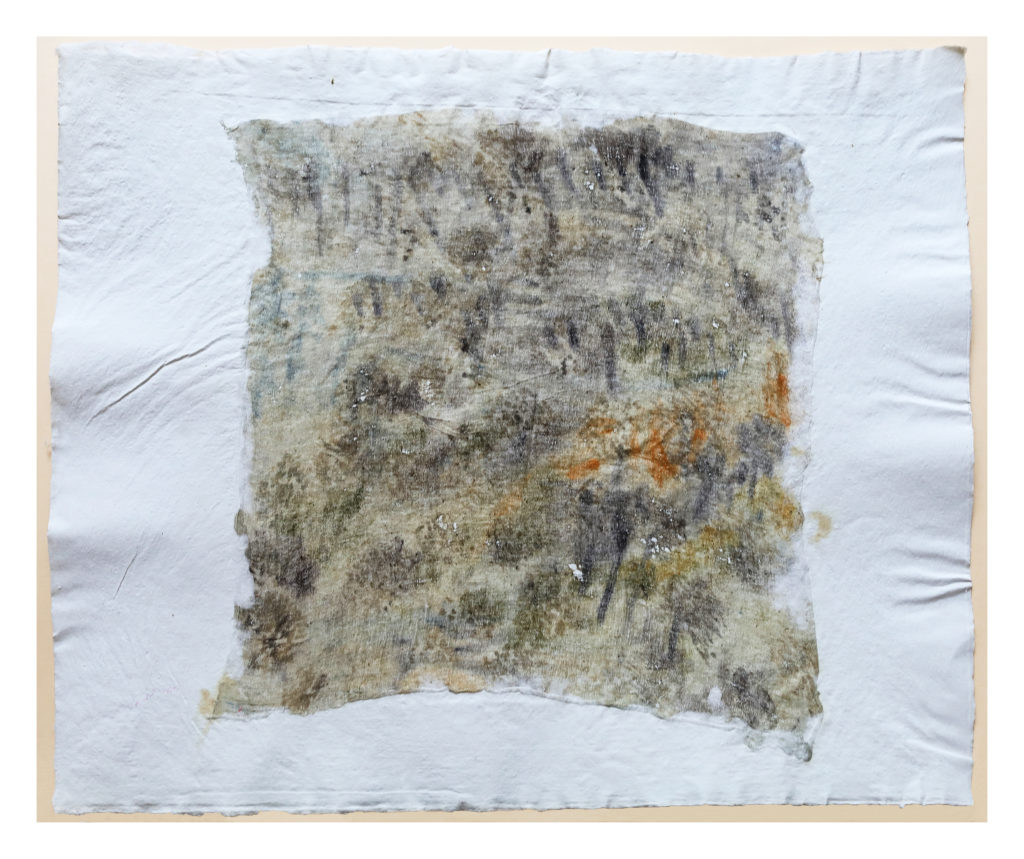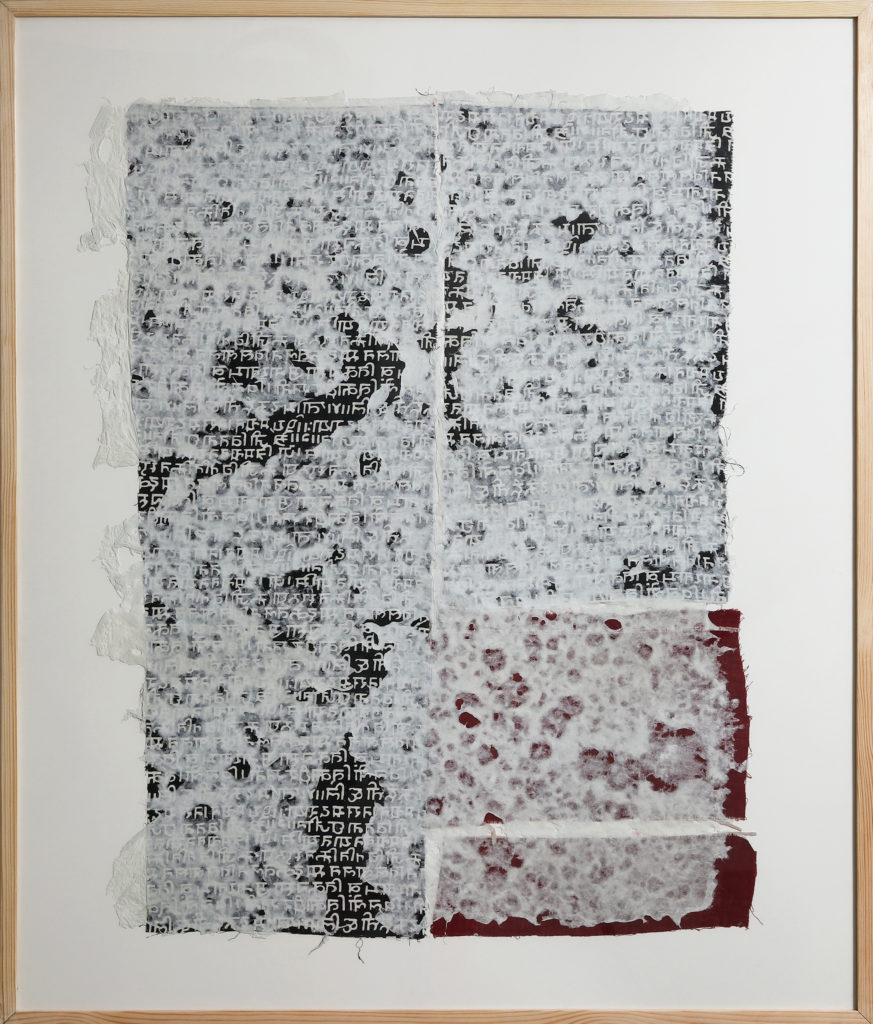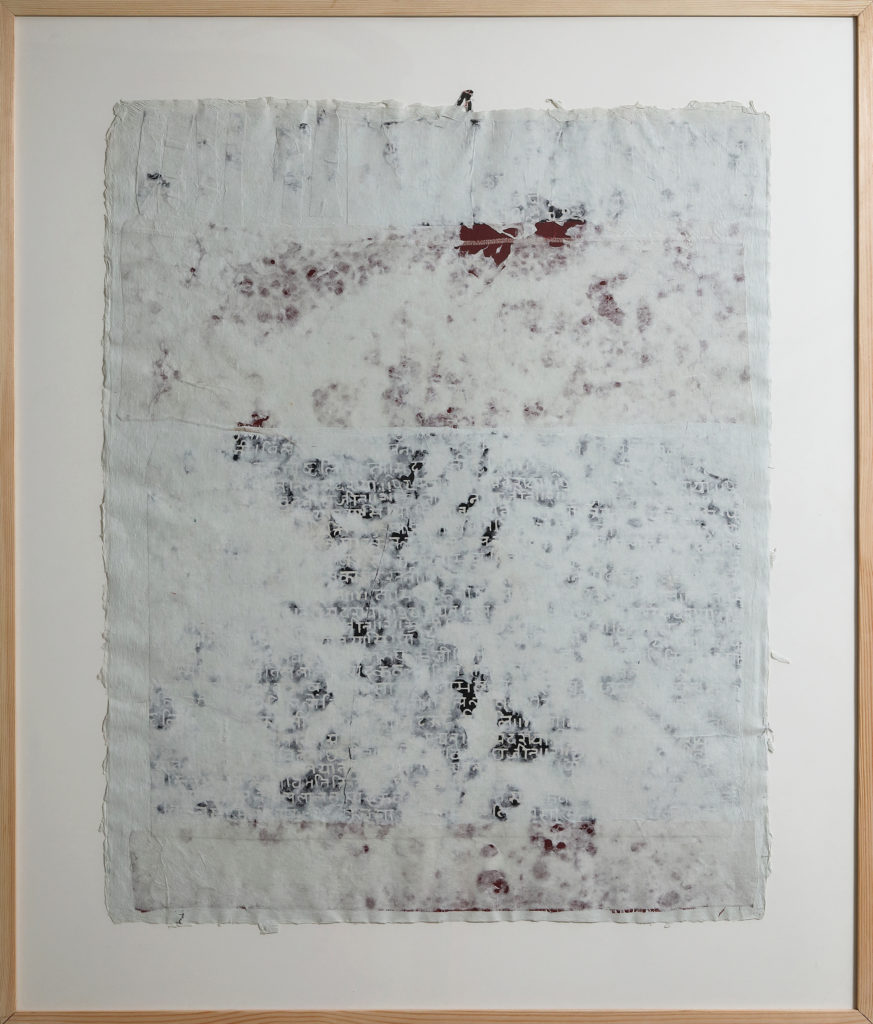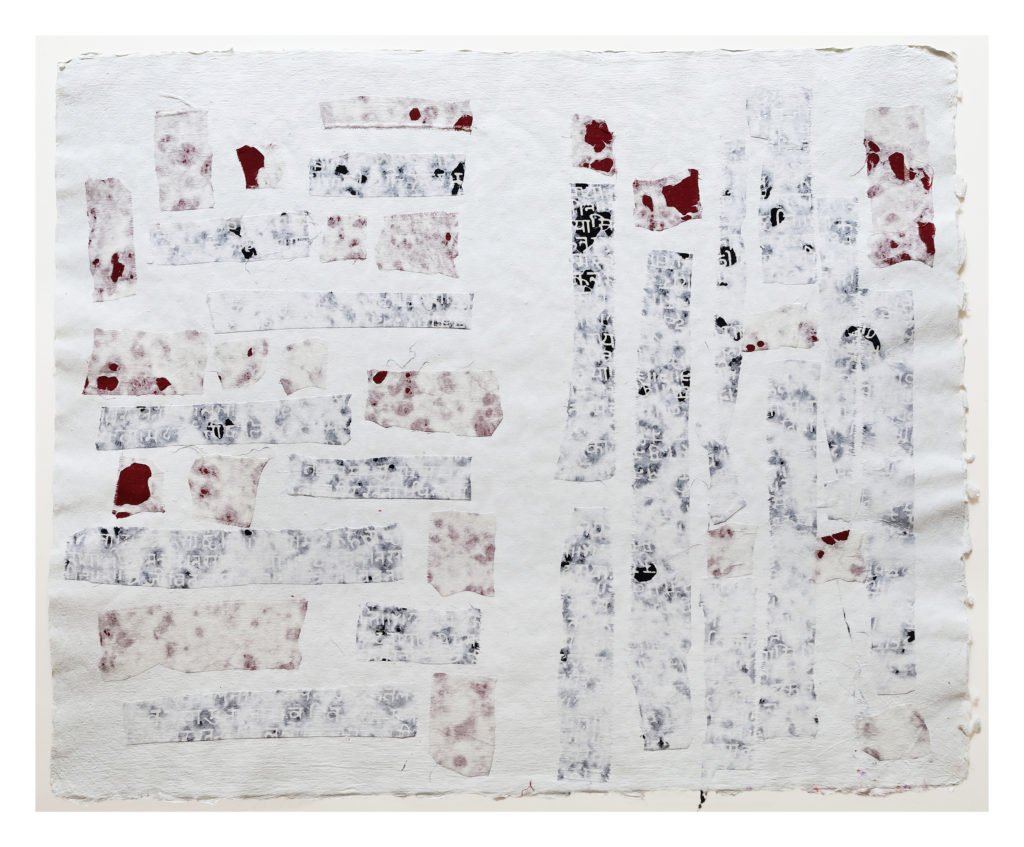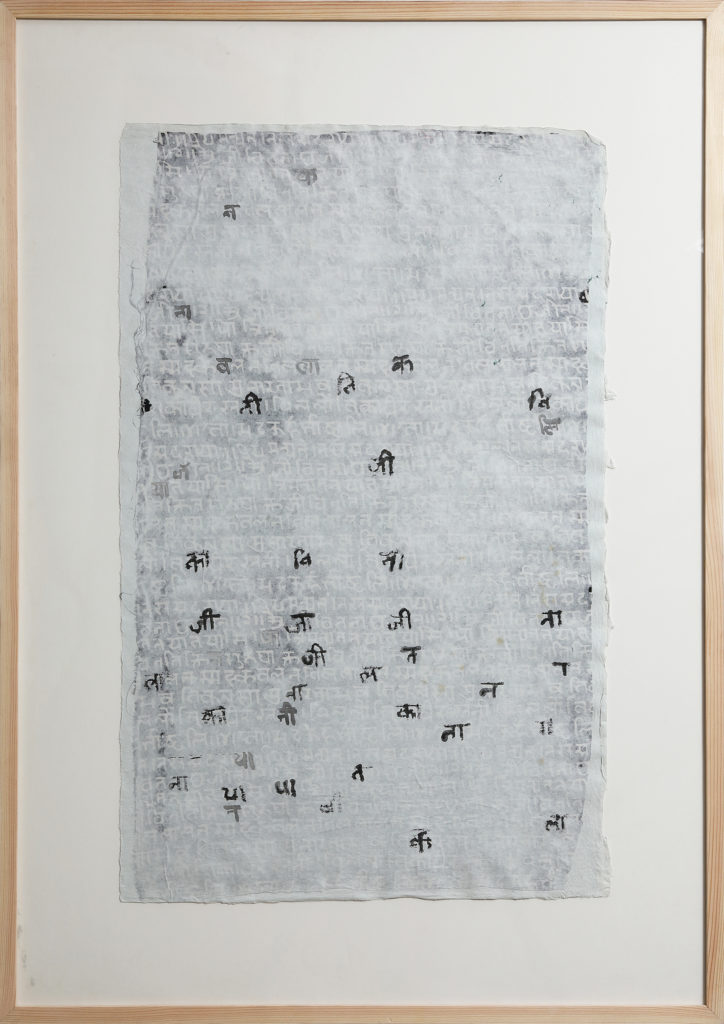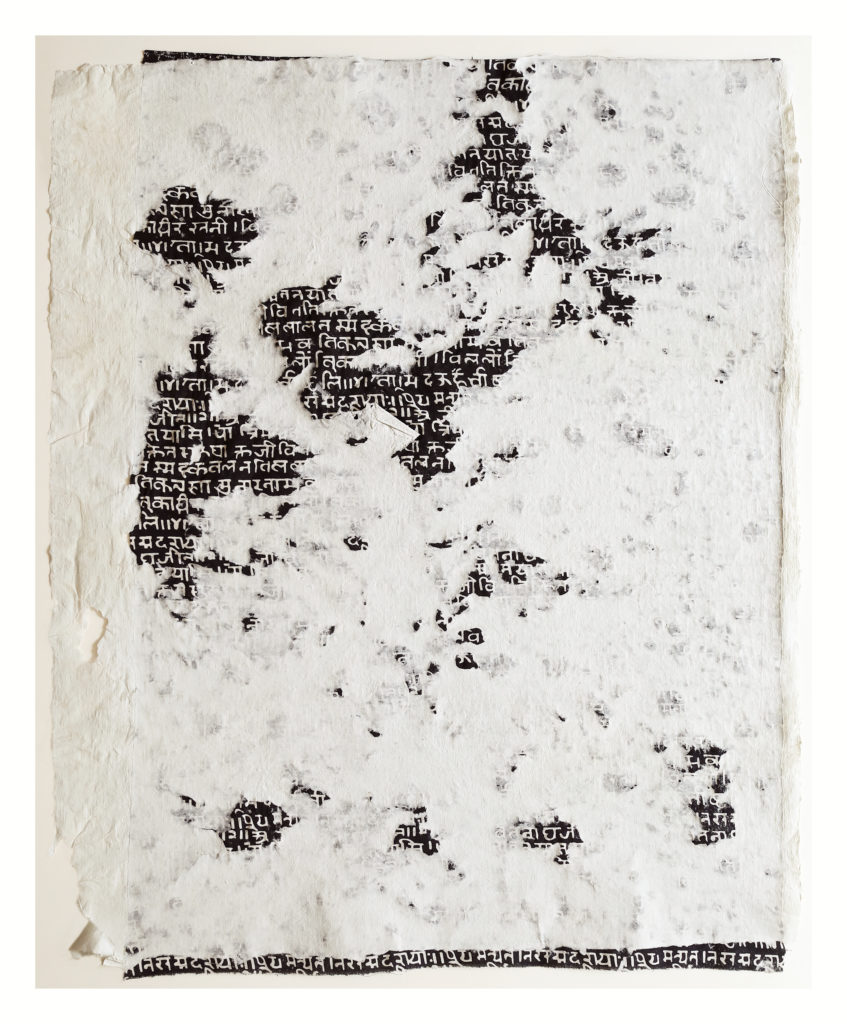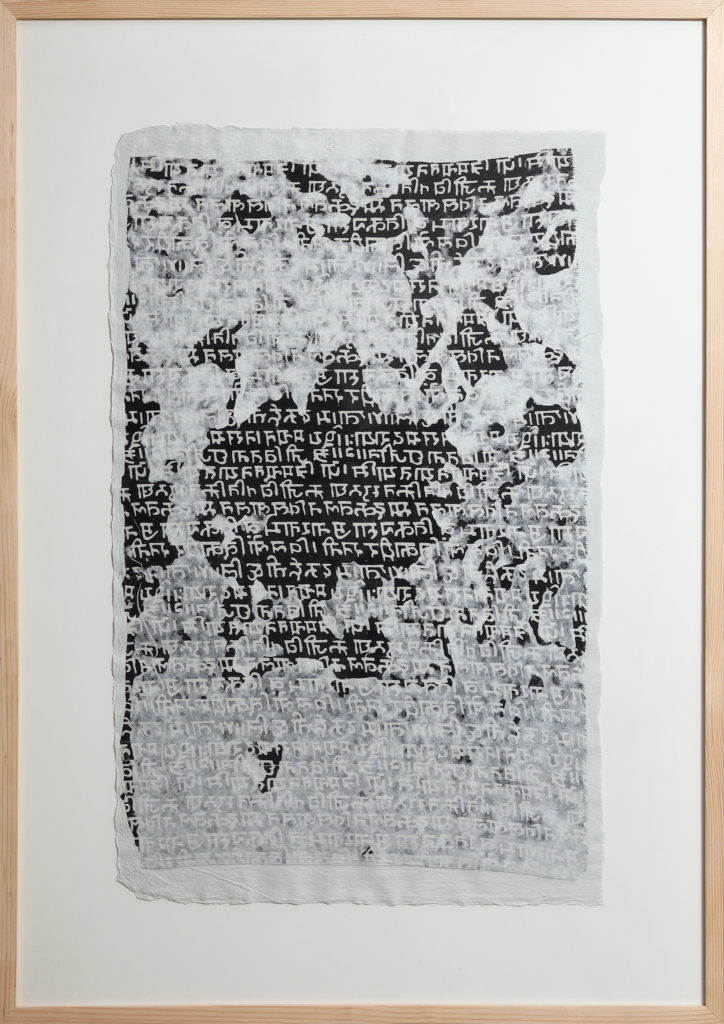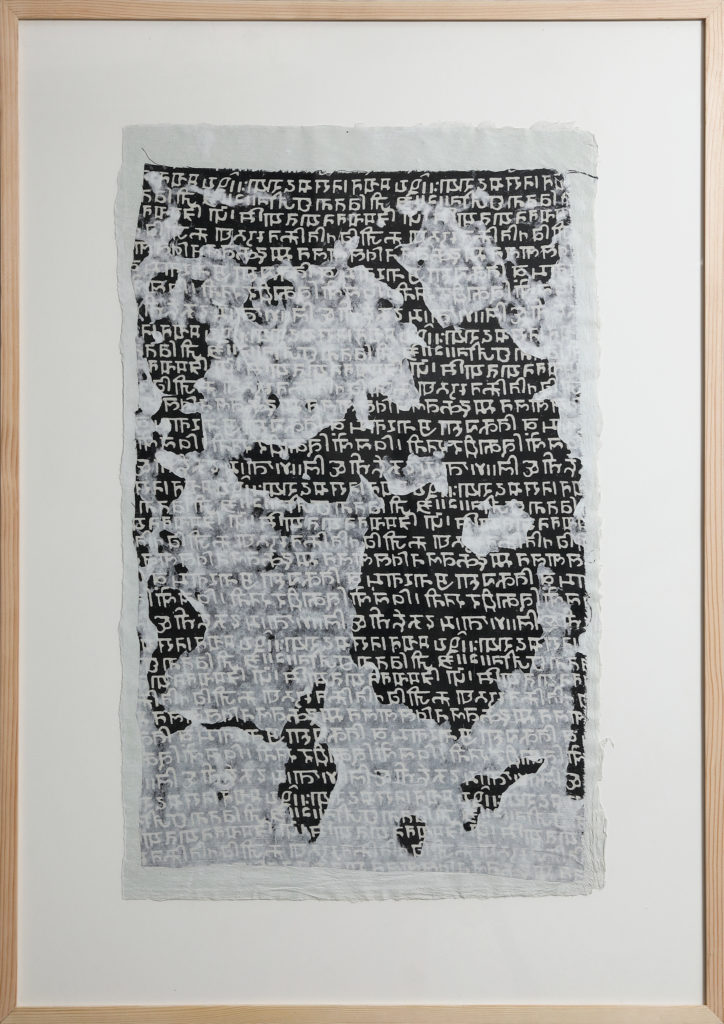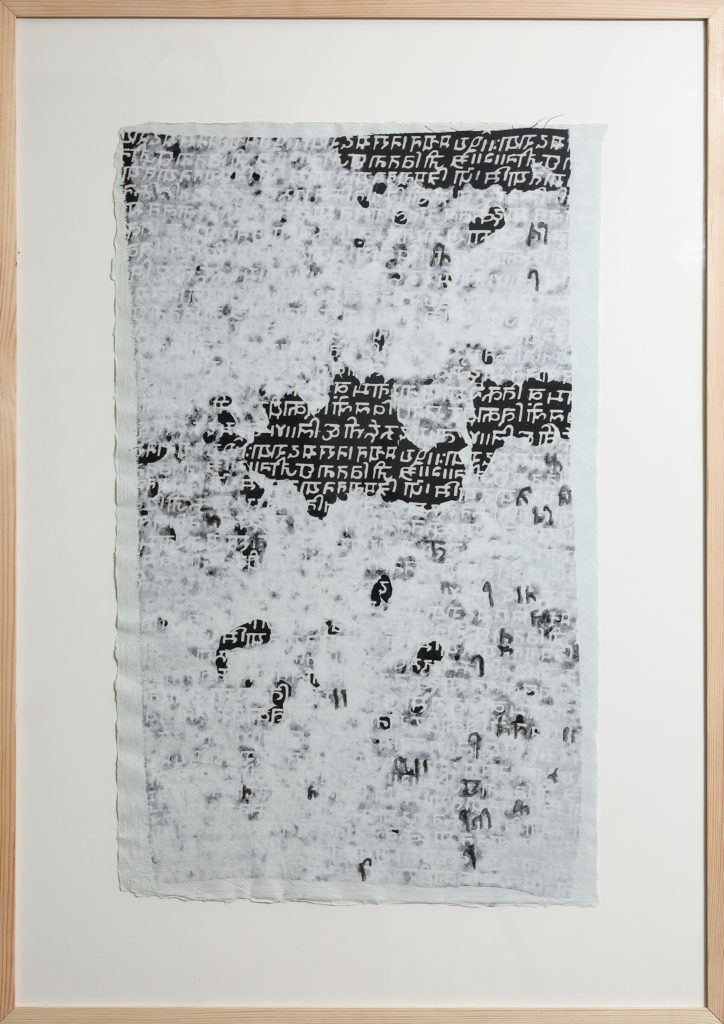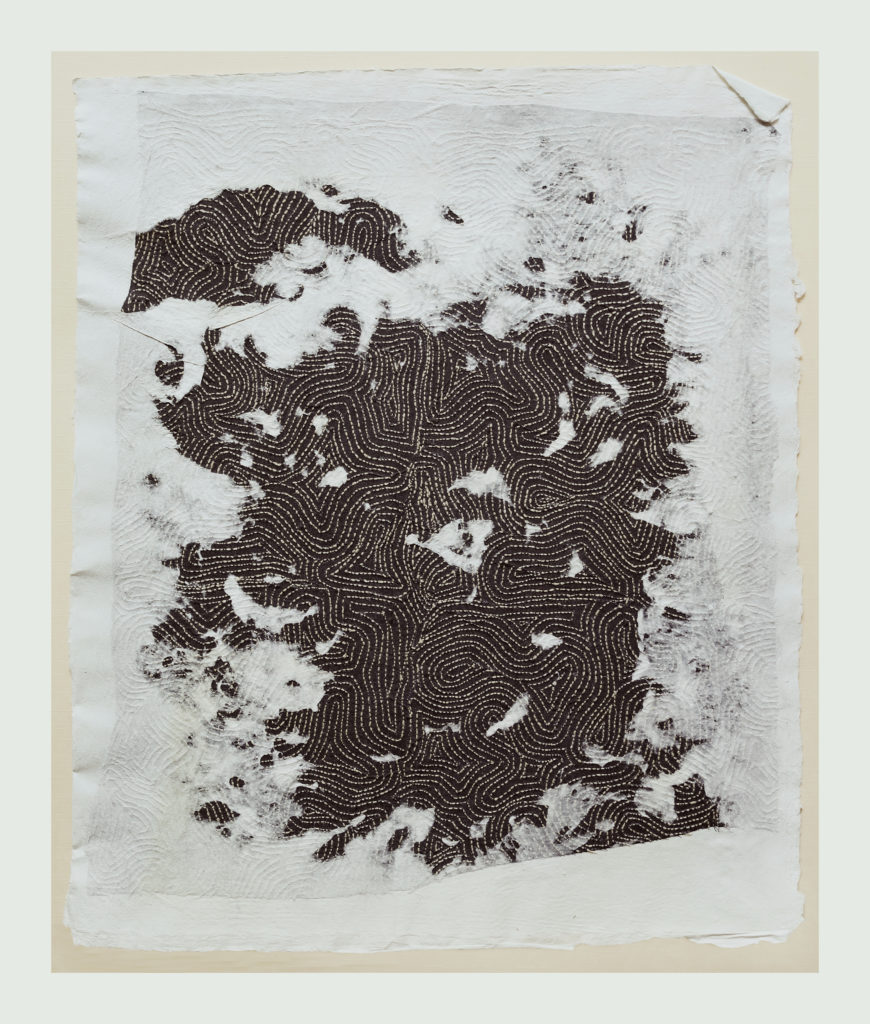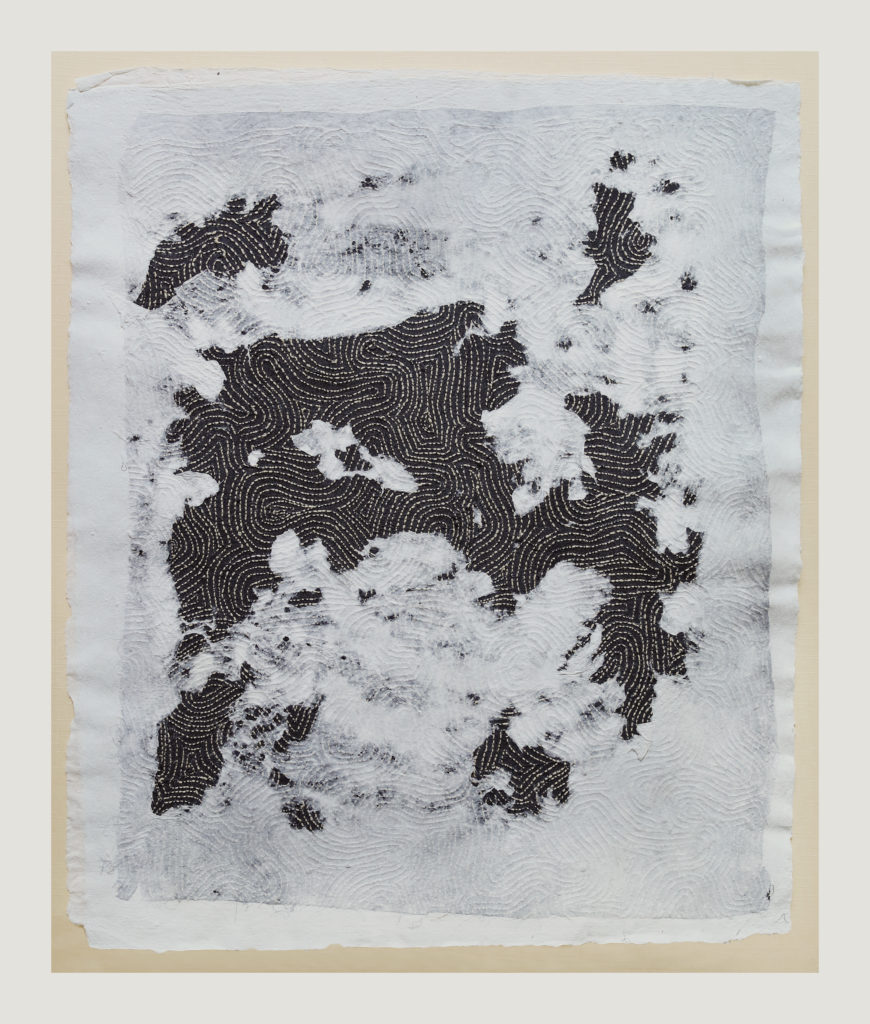An Unperfect Swaraj: A P.R.M Studio
The making of 3 Public Art Installations | Camouflage Net, Jute and Cotton Strips | 2015
In this array of images, one sees three works in the (In)Visible series of weaves, through various stages of their making. Priya specially created them for the sets of the Indian Languages Festival Samanvay 2015 & 16. This public art installation, at different times, invited everyone to partake in the making as well as revelations of ‘an unperfect swaraj’ — perfectly blending nature’s sounds, her entire household including her dogs, her friends, random visitors, even a post-wedding photography crew! But by weaving coloured strips of cloth from military camouflage nets into a different incarnation, and displaying them in a public place, she was actually creating an unprecedented language, reminding us about the histories and peoples that had long been marginalised and rendered invisible, and the urgent need for them to be included in our discourses, in all their tones and shades. She so beautifully subverted the violent history of the camouflage net, by telling us not to use it to shield ourselves from any enemy, but to blossom out fearlessly in all our colours.
Early Works: Weavings & Tapestry
Priya’s engagement with various Indian weaves encouraged her to connect with weaving traditions in other parts of the world, and she went to study tapestry weaving at the Royal College of Arts, London and the West Dean College, Sussex, UK., under the aegis of a Commonwealth Fellowship and Charles Wallace Trust (India) Scholarship. During this intensive phase of understanding textiles and weaving methods across borders, Priya recovered the idea of ‘connection’ as an important motif in her artistic work.
Experiments with Indigo
Priya’s association with Japanese textile expert Yoshiko Wada and her learning the practice of shibori, the Japanese dyeing technique, converged with her engagement with natural raw materials, organic farming and alternative healing therapies. The result was multiple experimentations with indigo planting and dyeing. She tested various intensities of indigo in a vat in her garden and dyed different materials ranging from papier-mâché to cotton cloth, to discover newer colours and textures day after day.
Rafoo-Inspired Works
Priya hailed from Najibabad, famous for its rafoogari (traditional darning) work. Through her years of fight with cancer, she saw the stark parallel between the native rafoogar’s work of repairing old fabrics and the processes that must heal the fabric of her own life. It steered Priya into another intense journey, artistic as well as existential. She began to reunderstand the notion of ‘imperfection’ and saw that no claim to modernity was valid if it attempted to construct a false sense of perfection and independence, decrying its past, camouflaging its wounds. Priya's discovery of the ‘rafoo’ as a metaphor of healing was a turning point in her life and artistic career. Her studies on the history and practice of rafoogari are now being complied into a book.
Natural Fibres and Mixed Media
As Priya discovered the deep connections among different materials during her work with rafoogars and weavers, she began to make them visible through her art. She started a new search for ‘not-so-perfect’ materials that do not mind revealing the threads inside them. Her frames during this phase of work showed threads coming out of different textures and material – rags, paper pulp, mixed media. And, as time passed, the threads became different, too – all sorts of organic material including dried coconut flowers, banana fibres, Daphne bark, and anything interesting that she found on the road.
Towards a New Script: Art-making with Words
Towards the end of her life, Priya was getting more and more interested in exploring the correlations between forms of human language and natural materials. She had begun weaving scripts into her works and wanted to link the dastangoi, a traditional form of storytelling with her rafoogari-based work. The promises of these works were yet to be fulfilled, but we still see the direction of her thoughts—towards creating a new script, a revolutionary art-making practice.




















